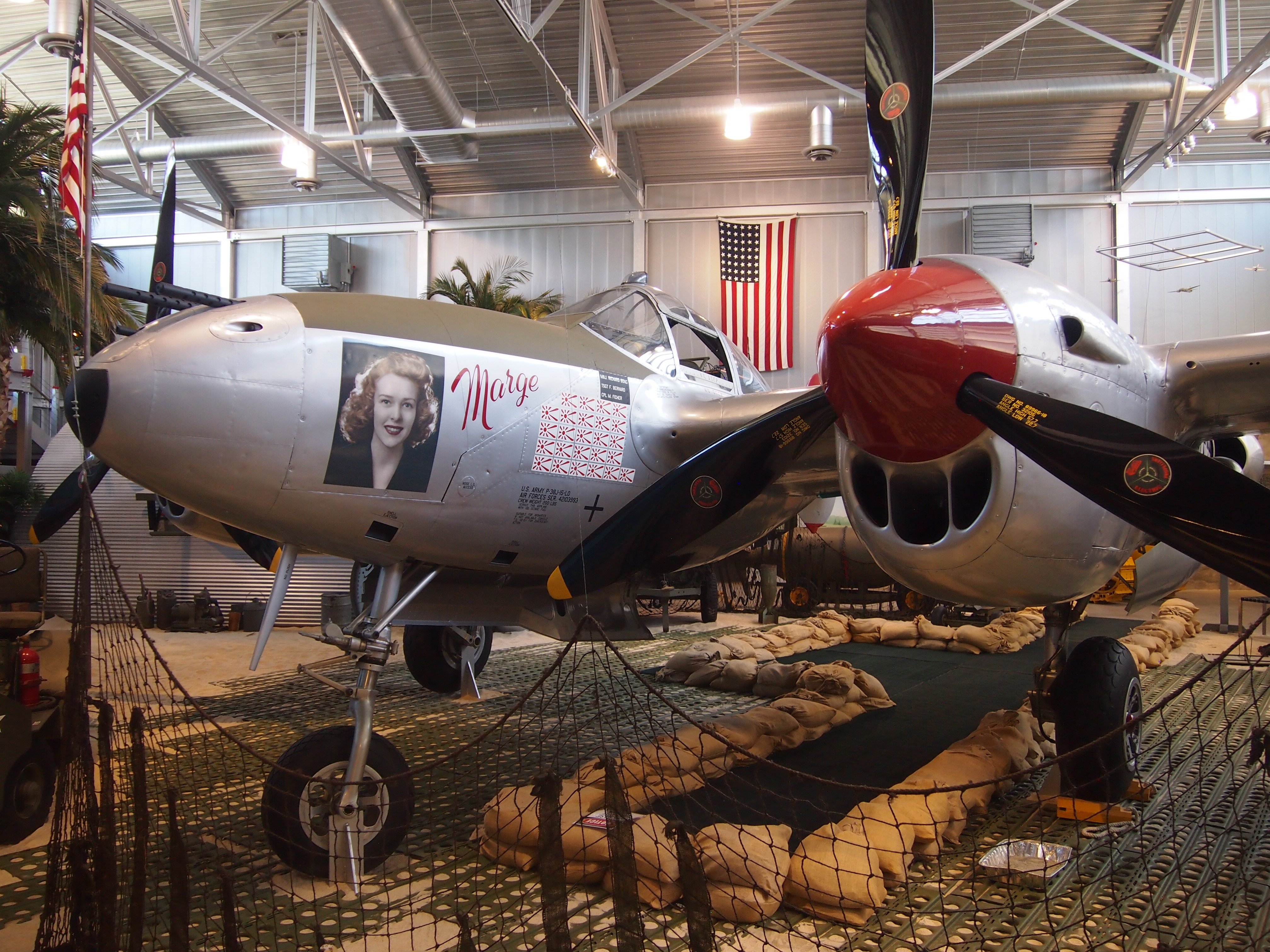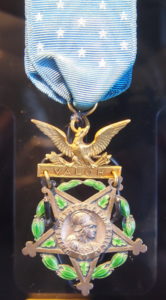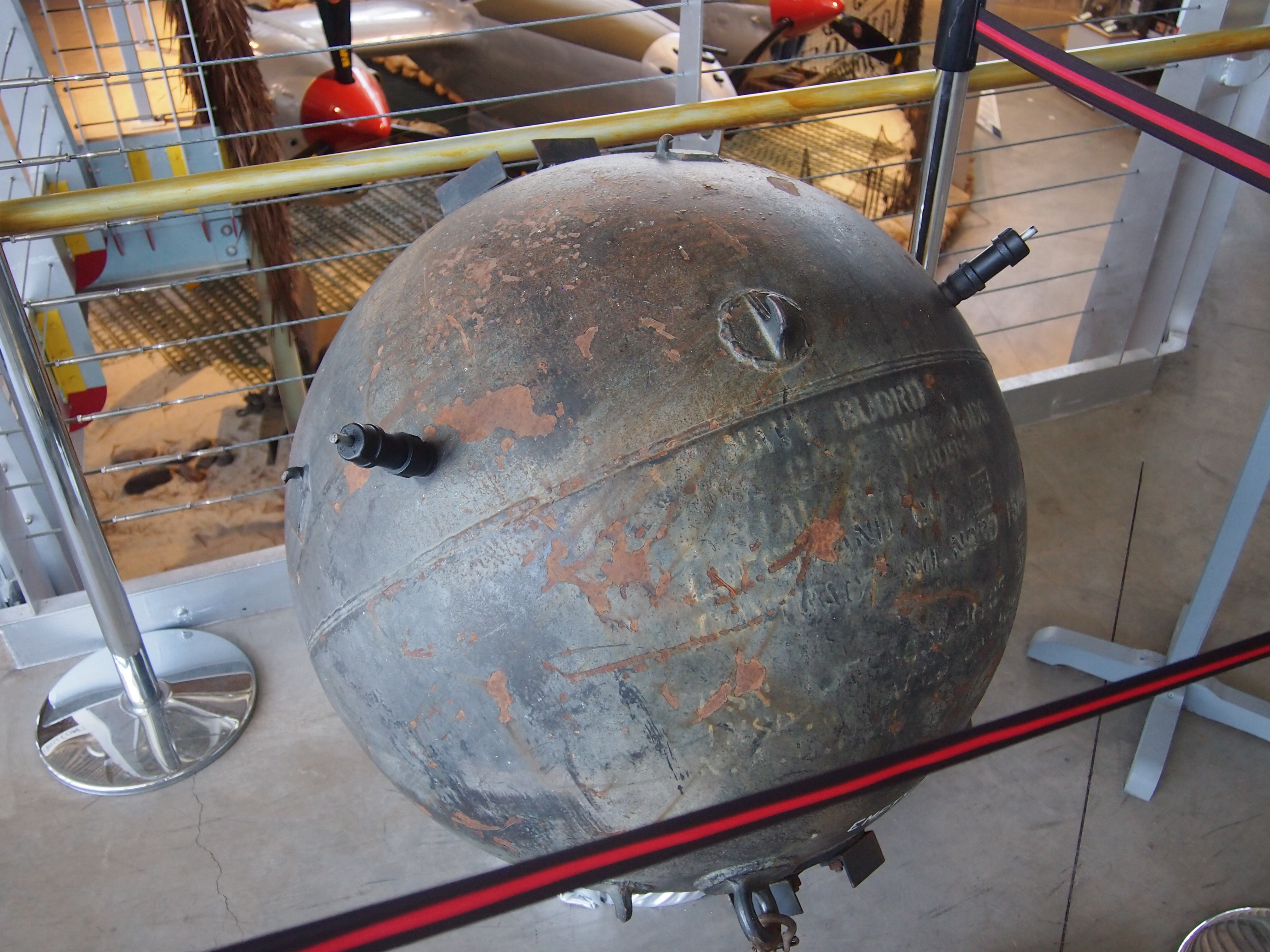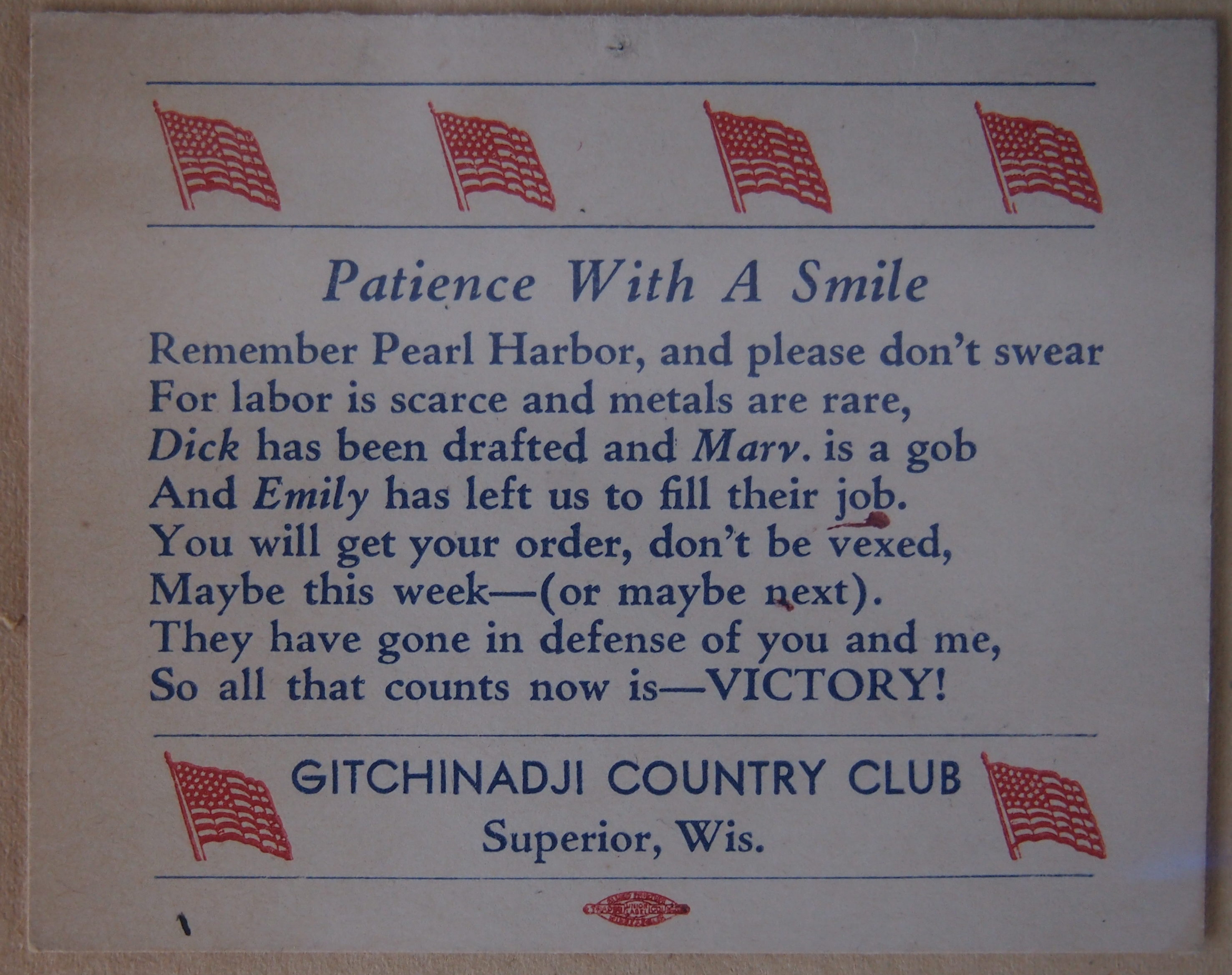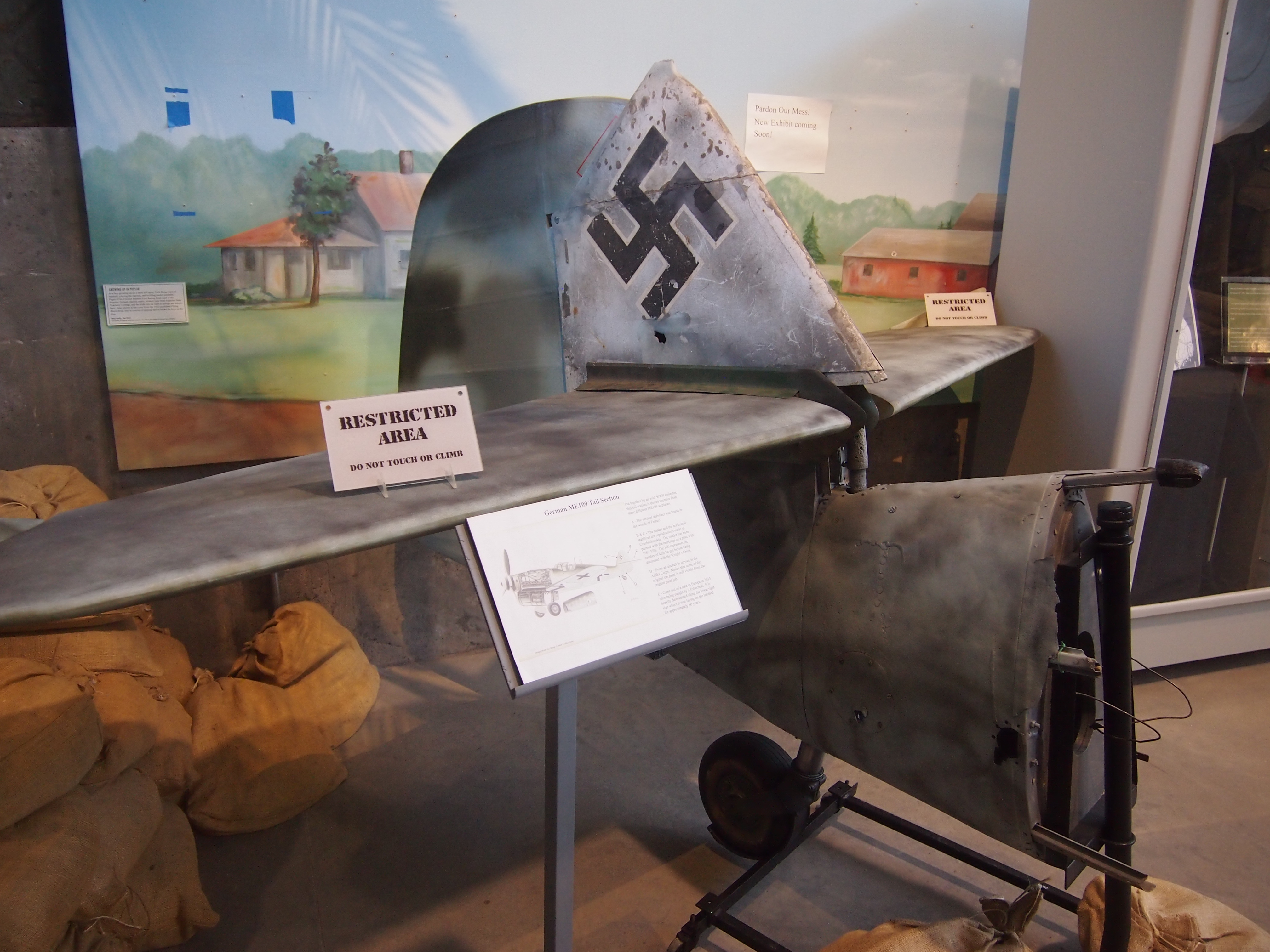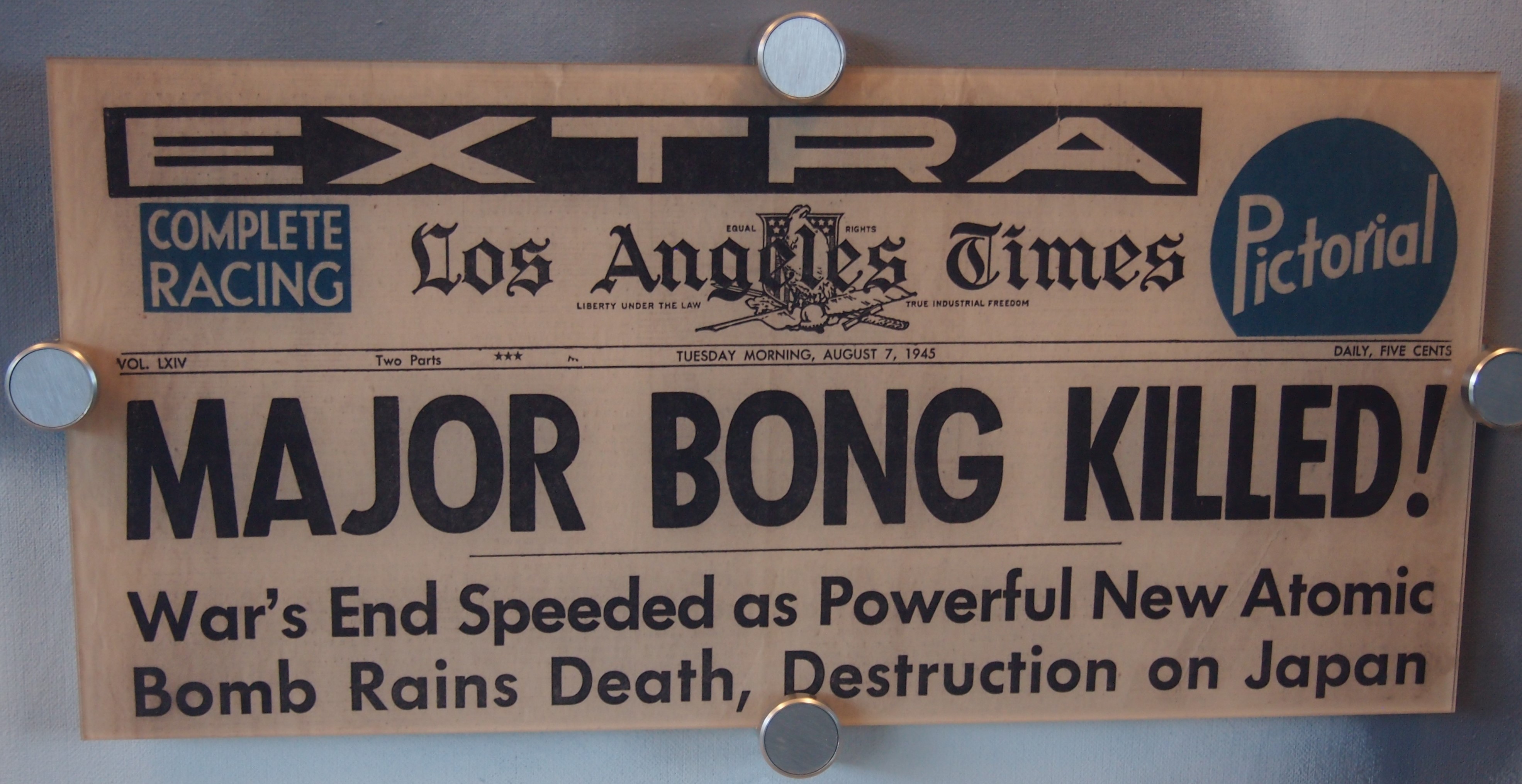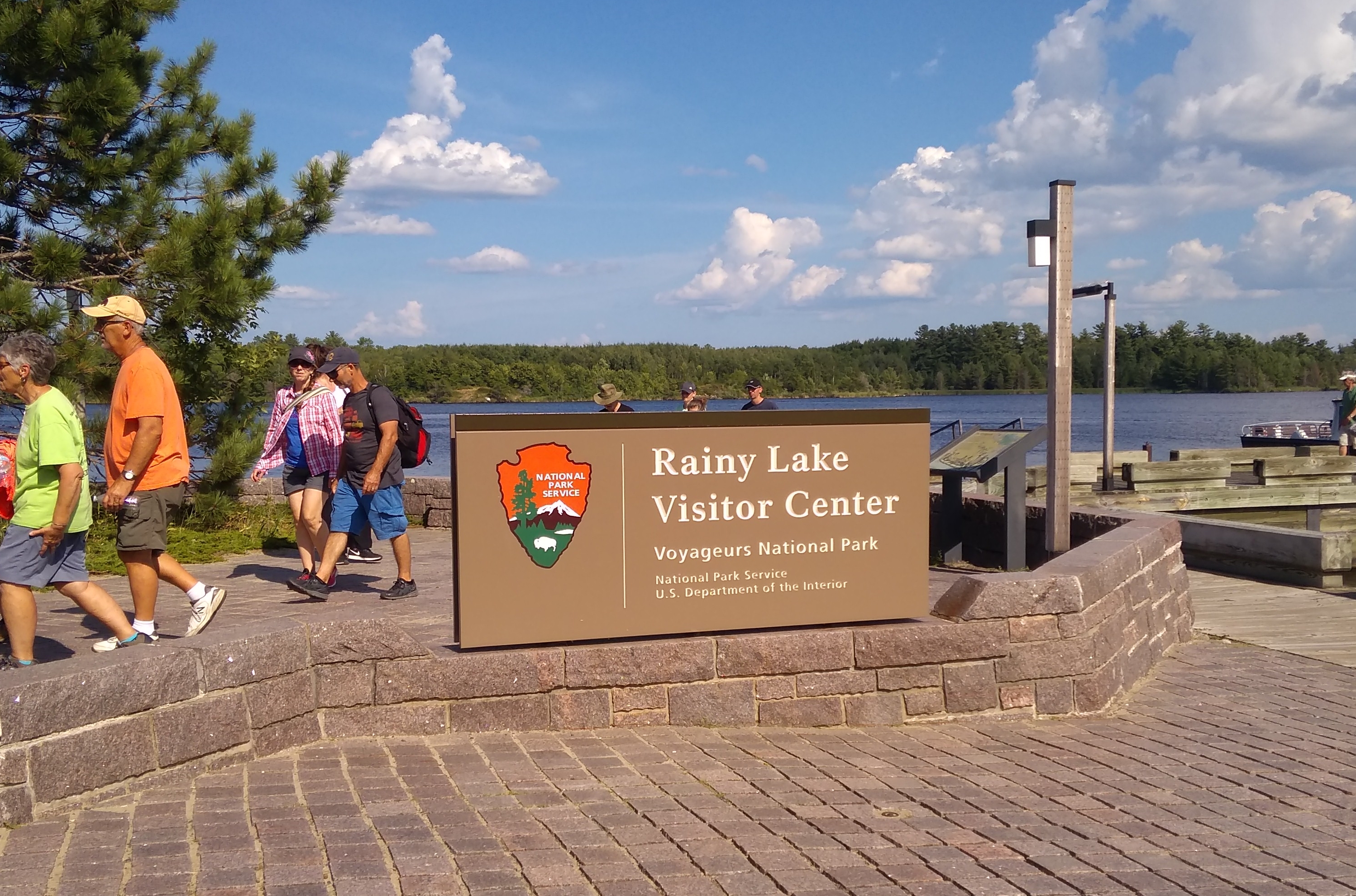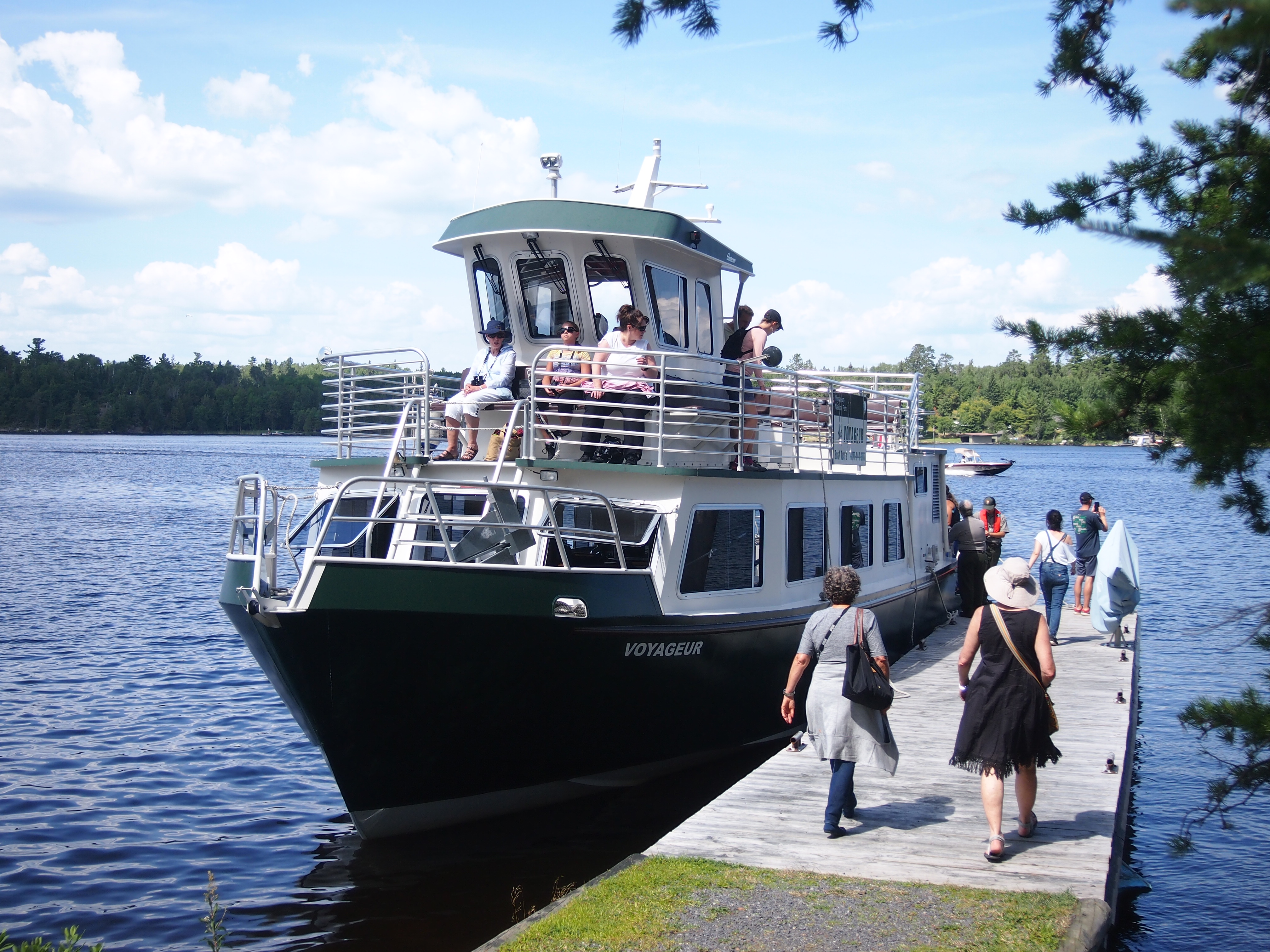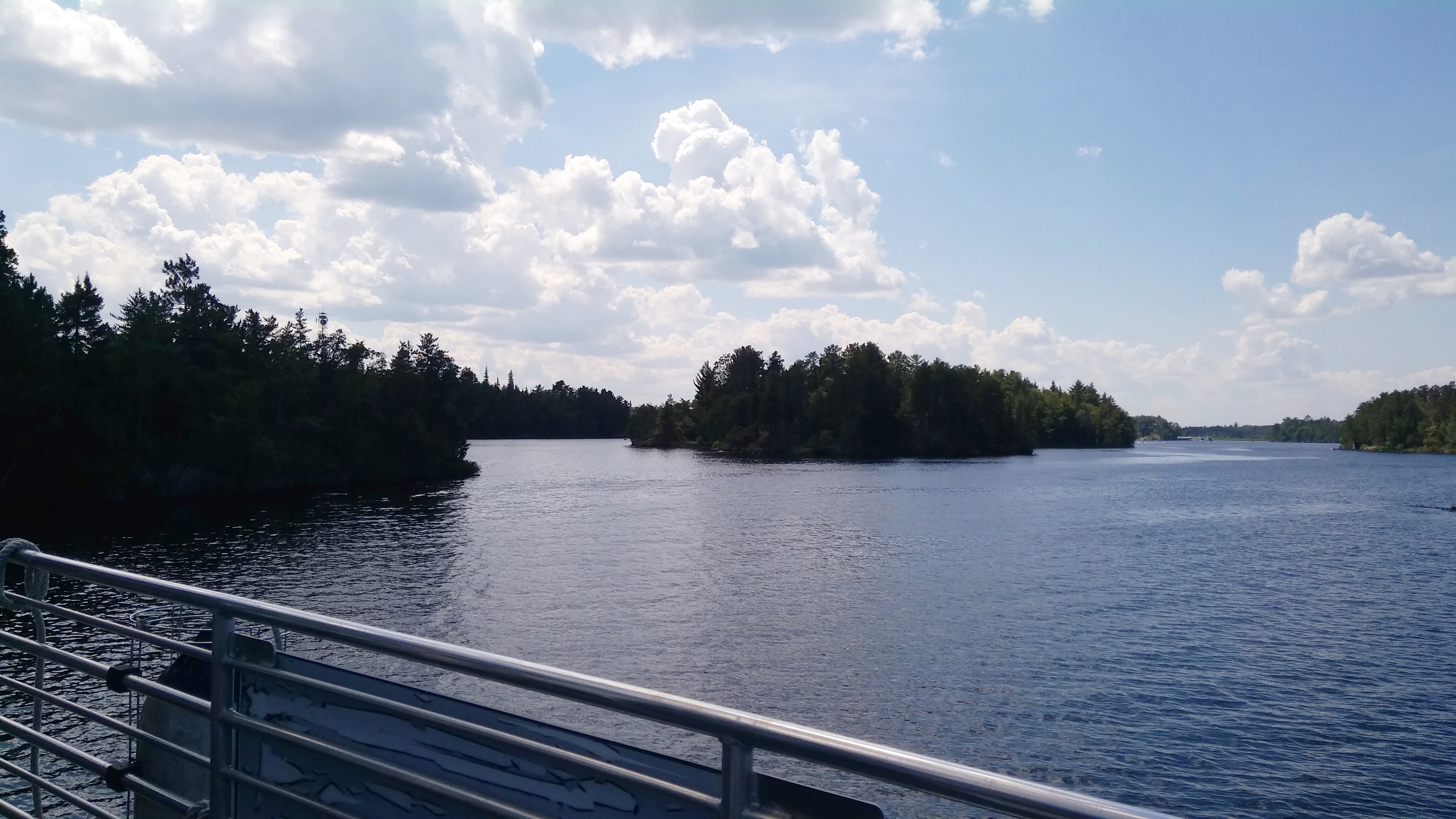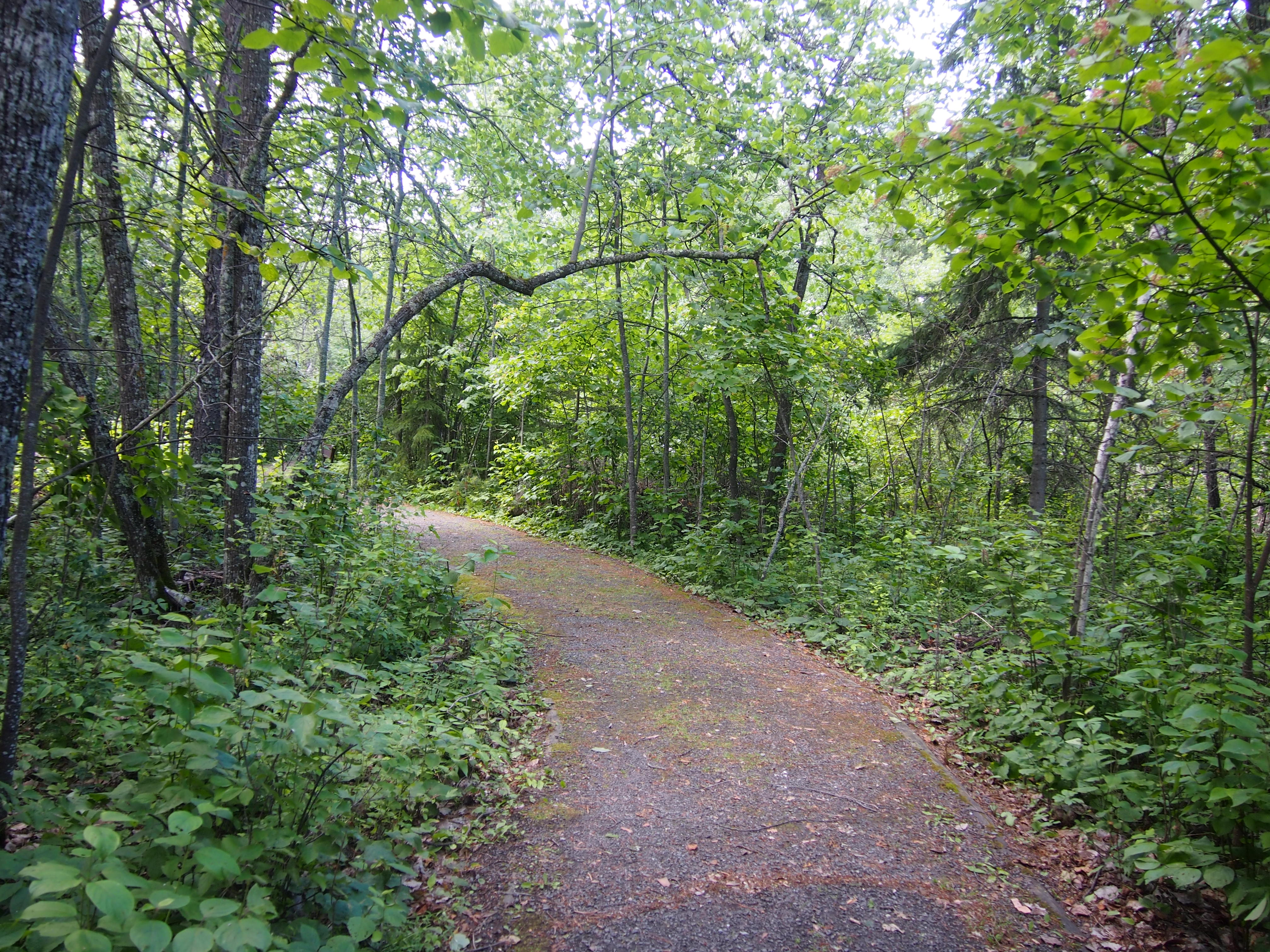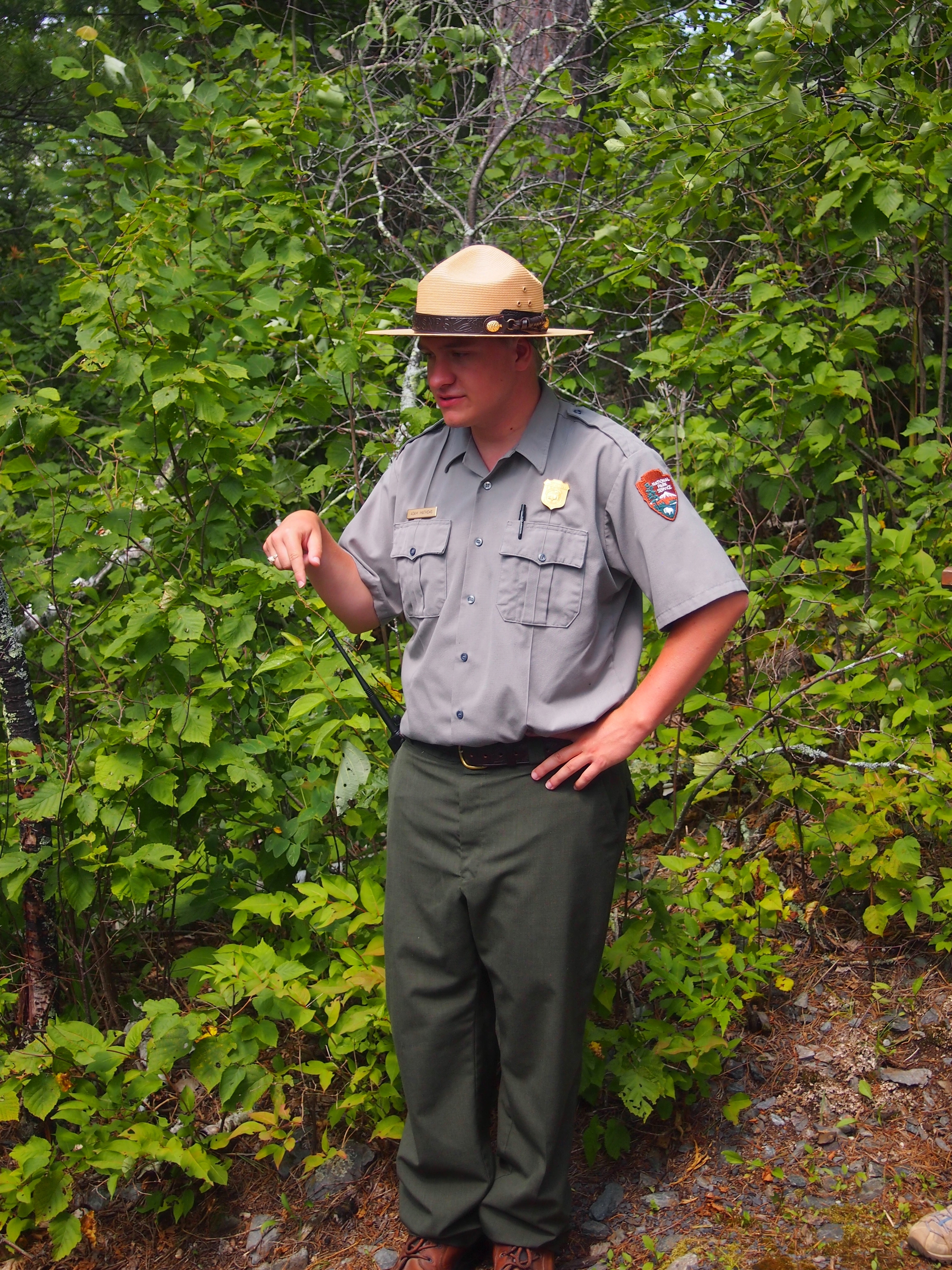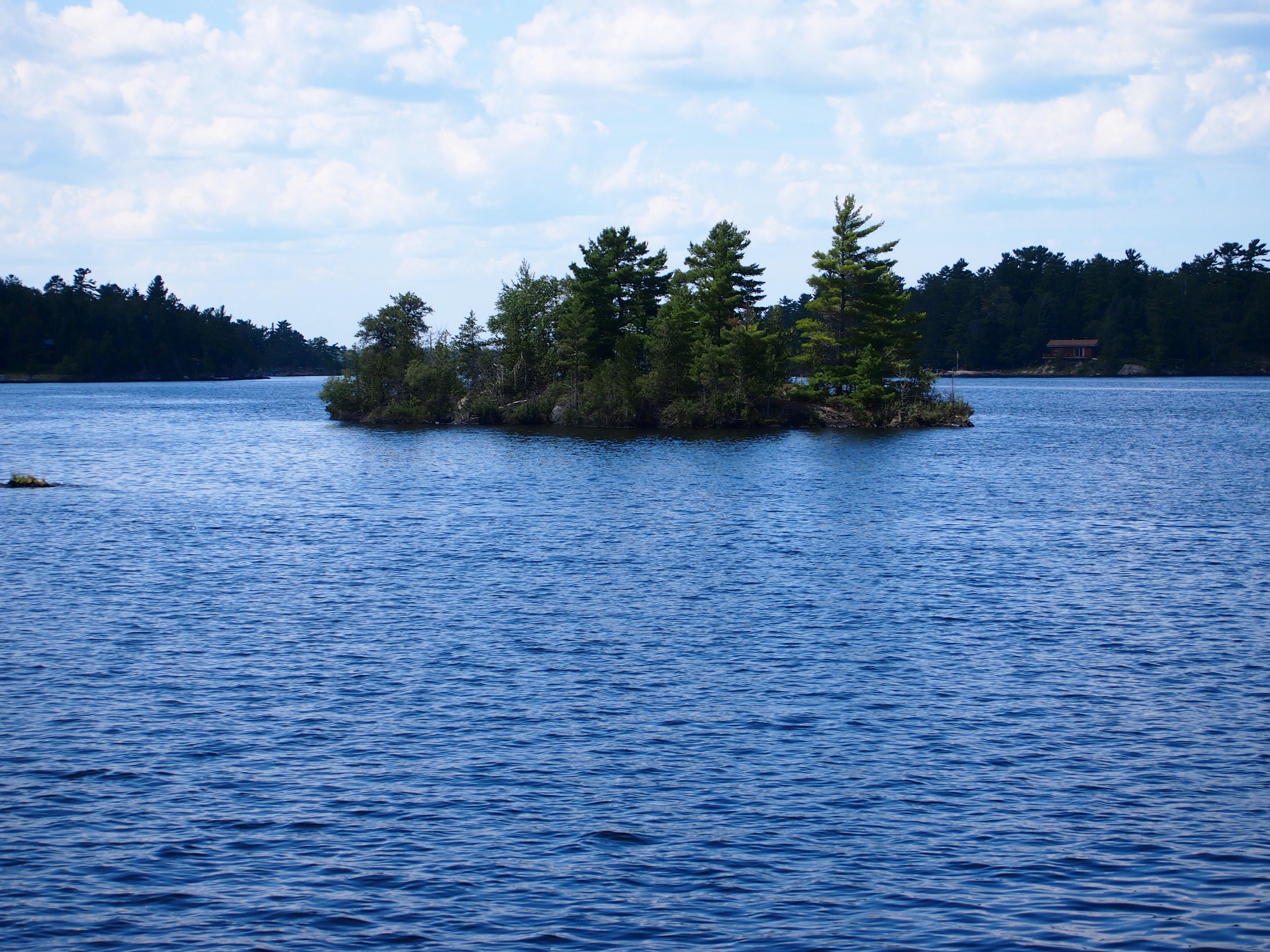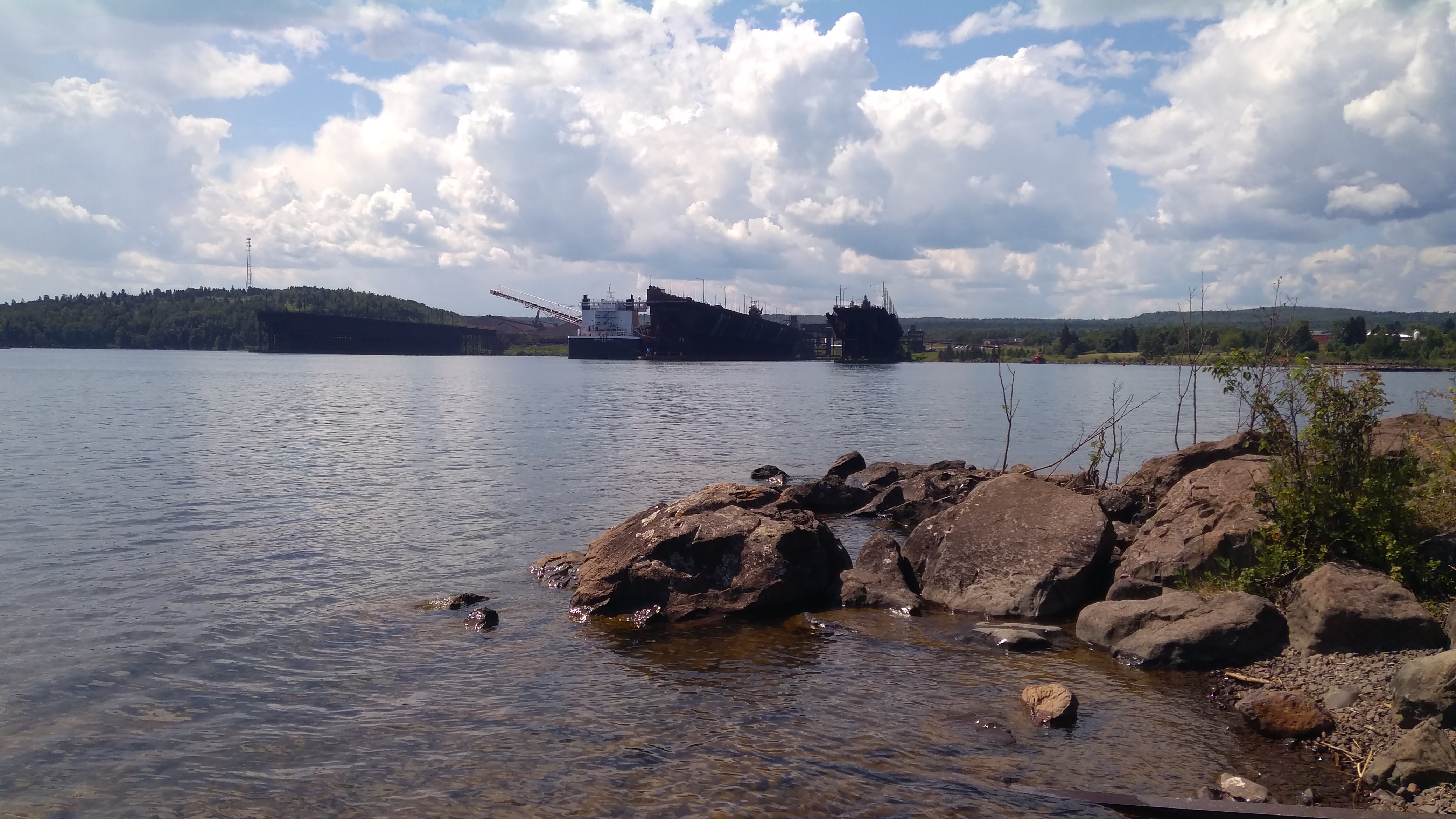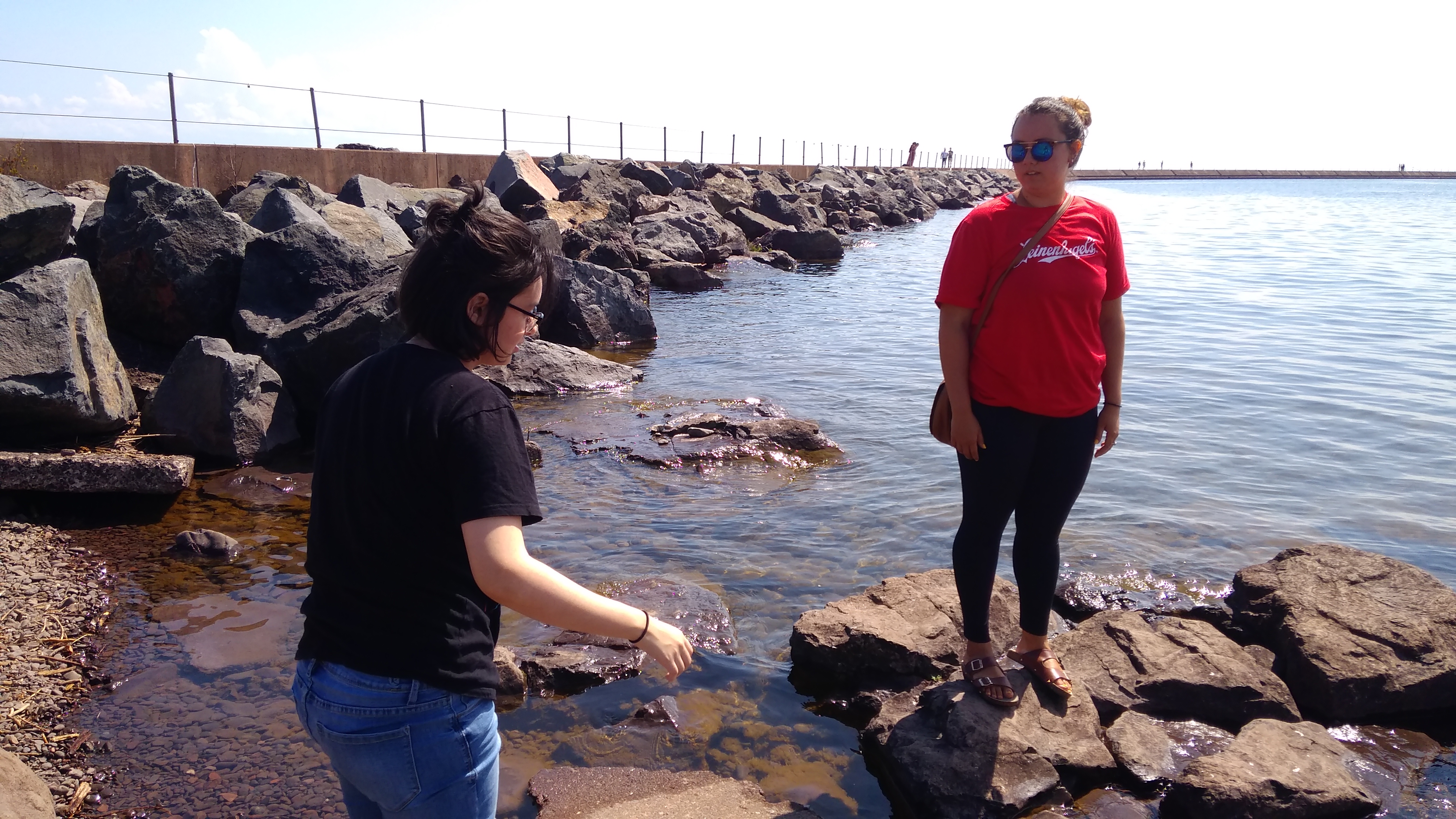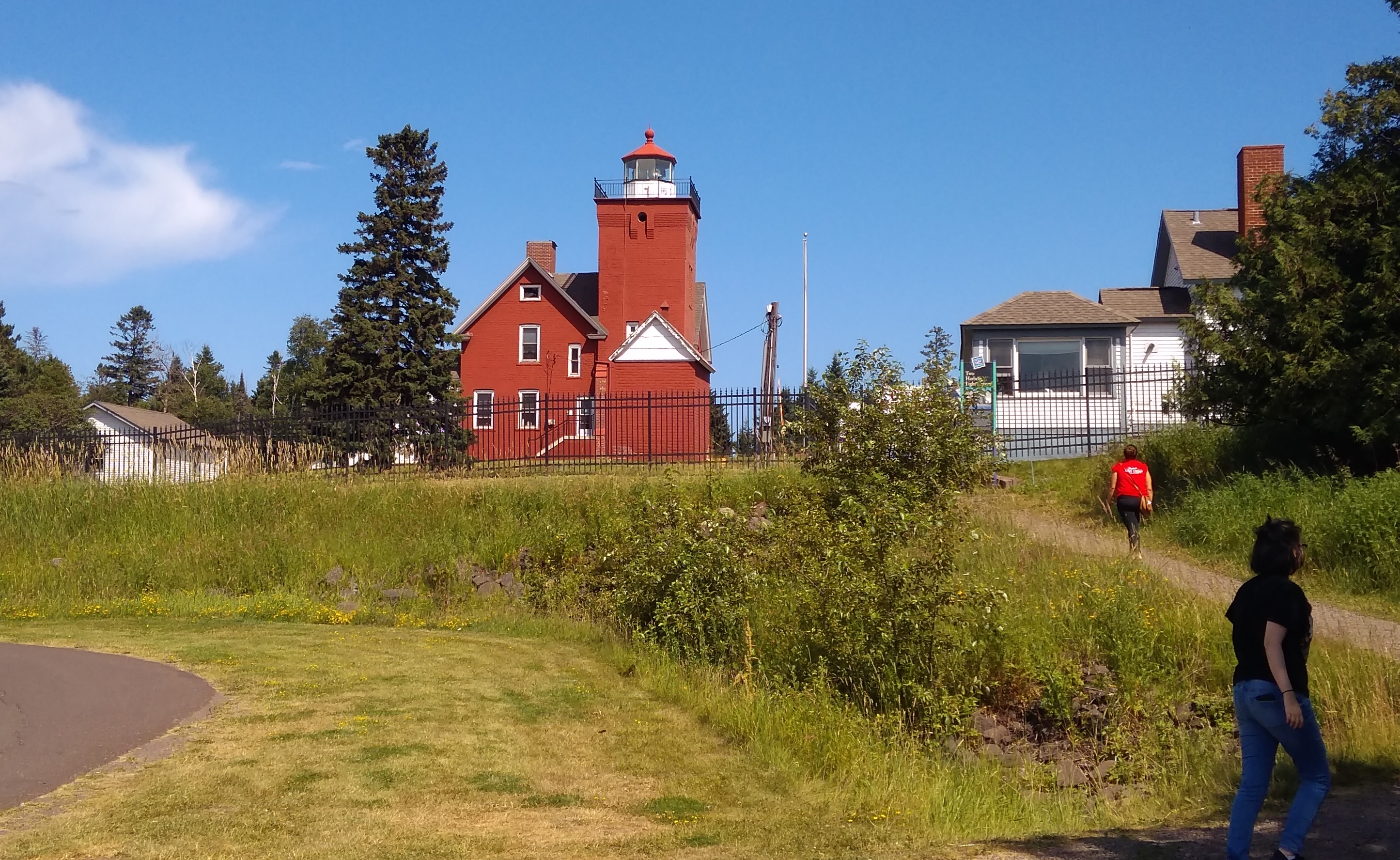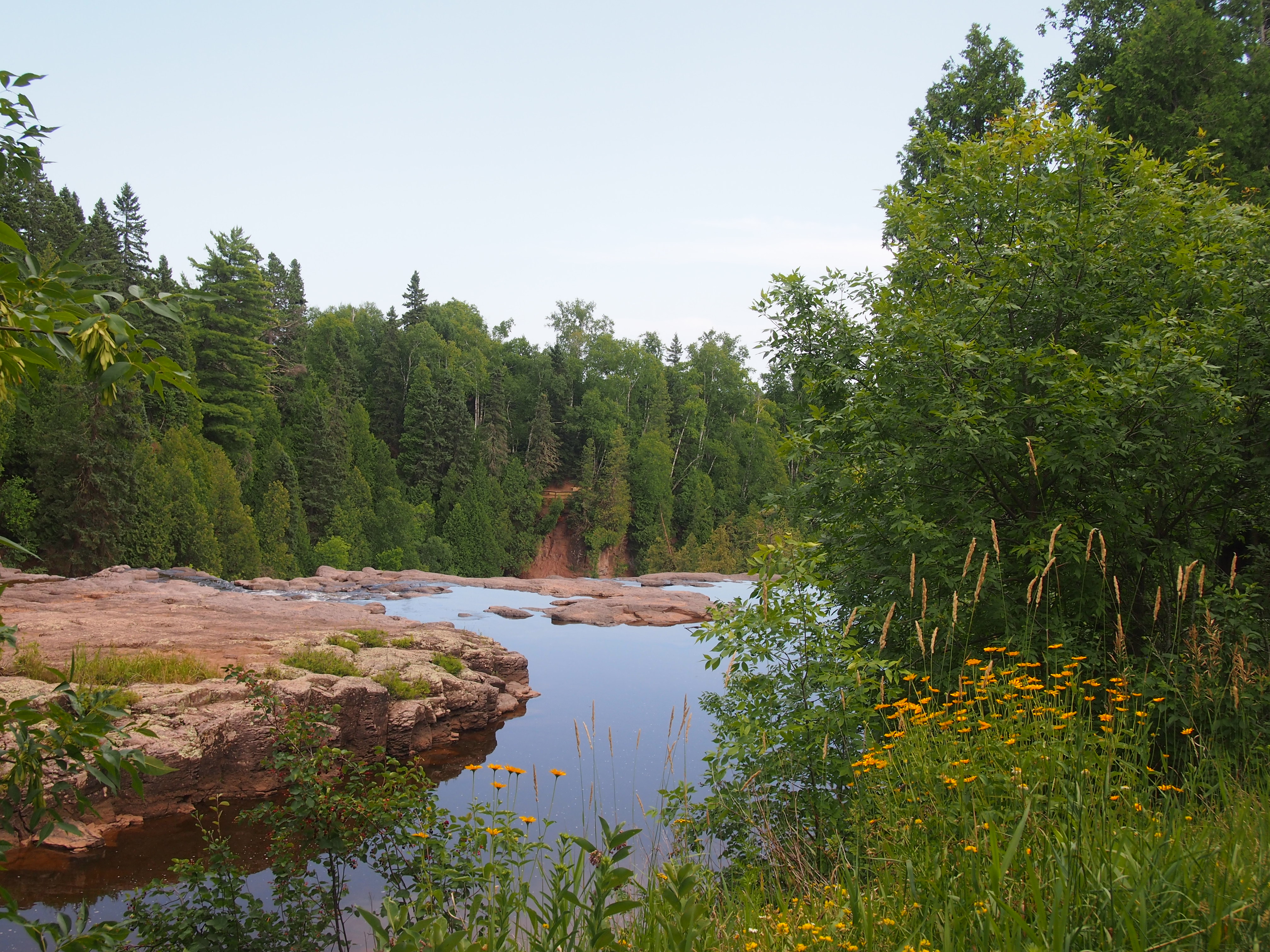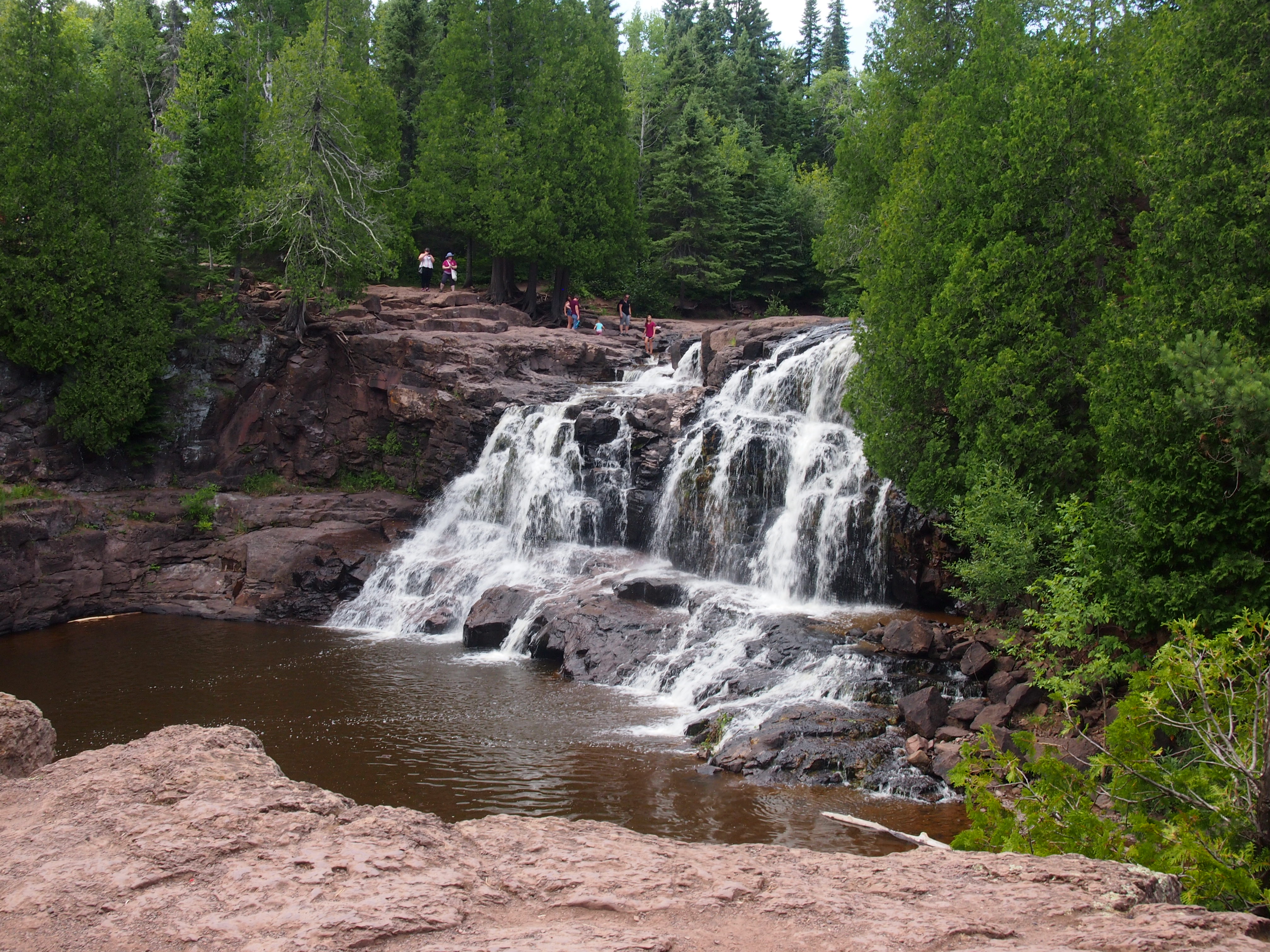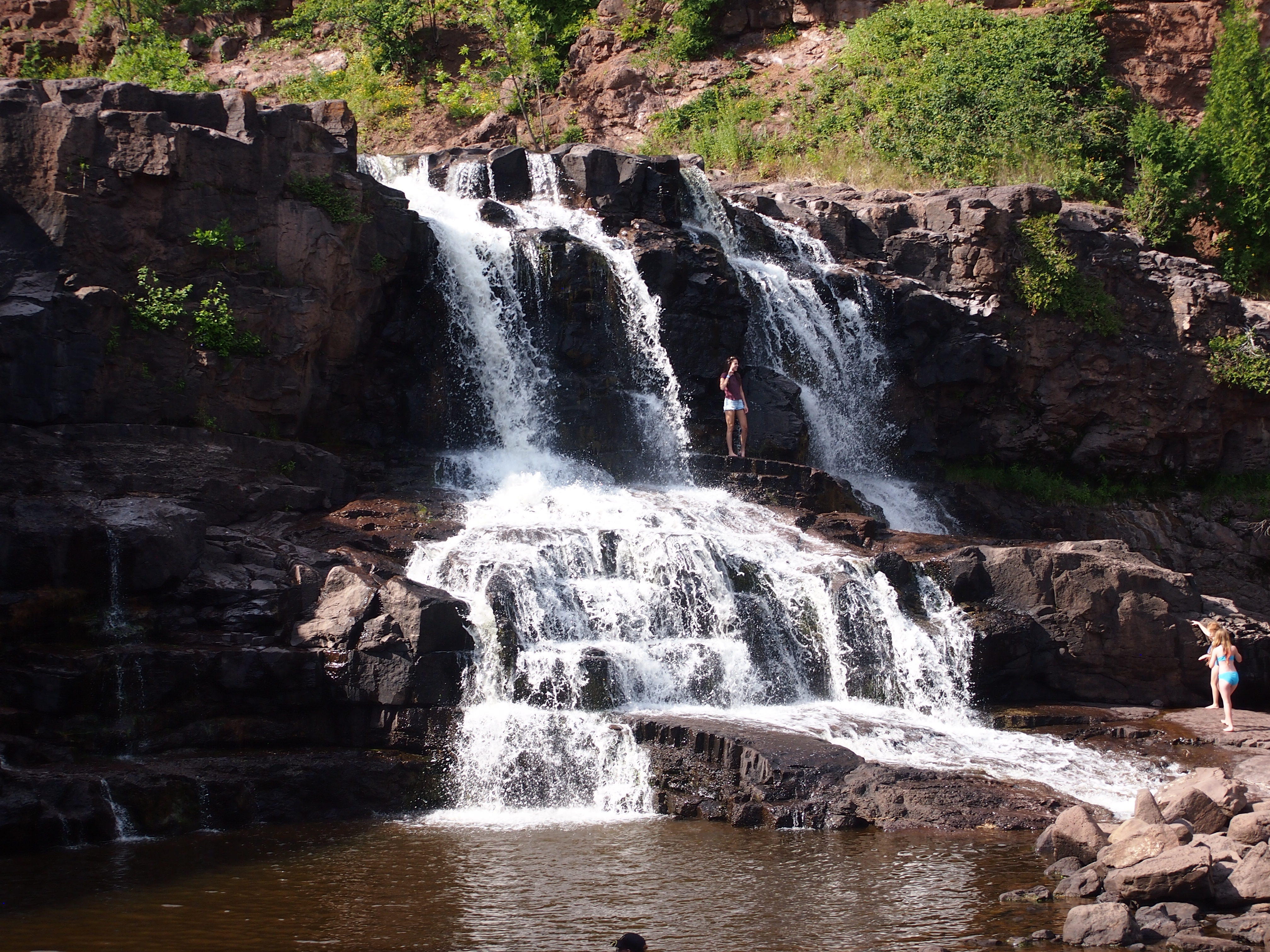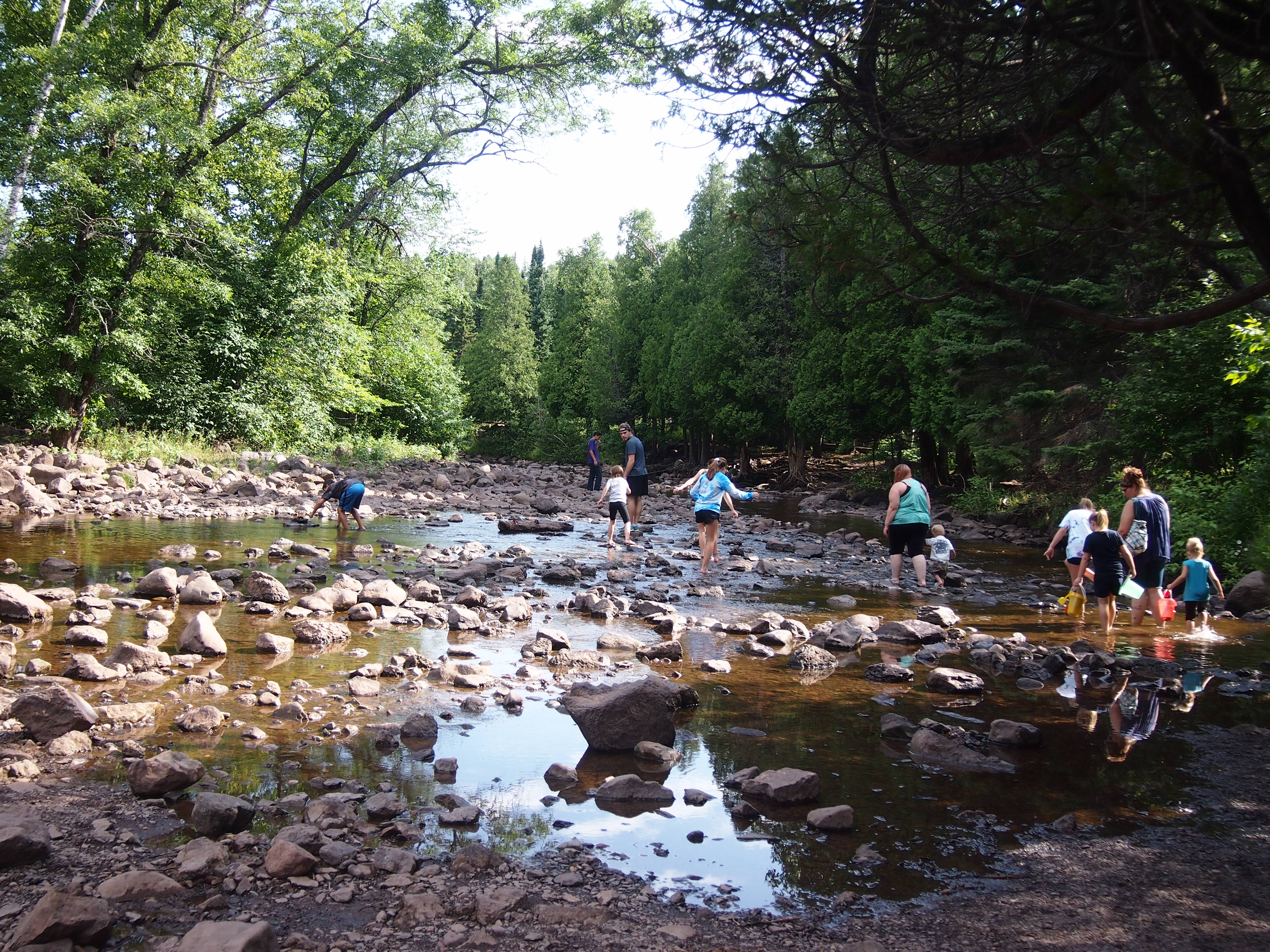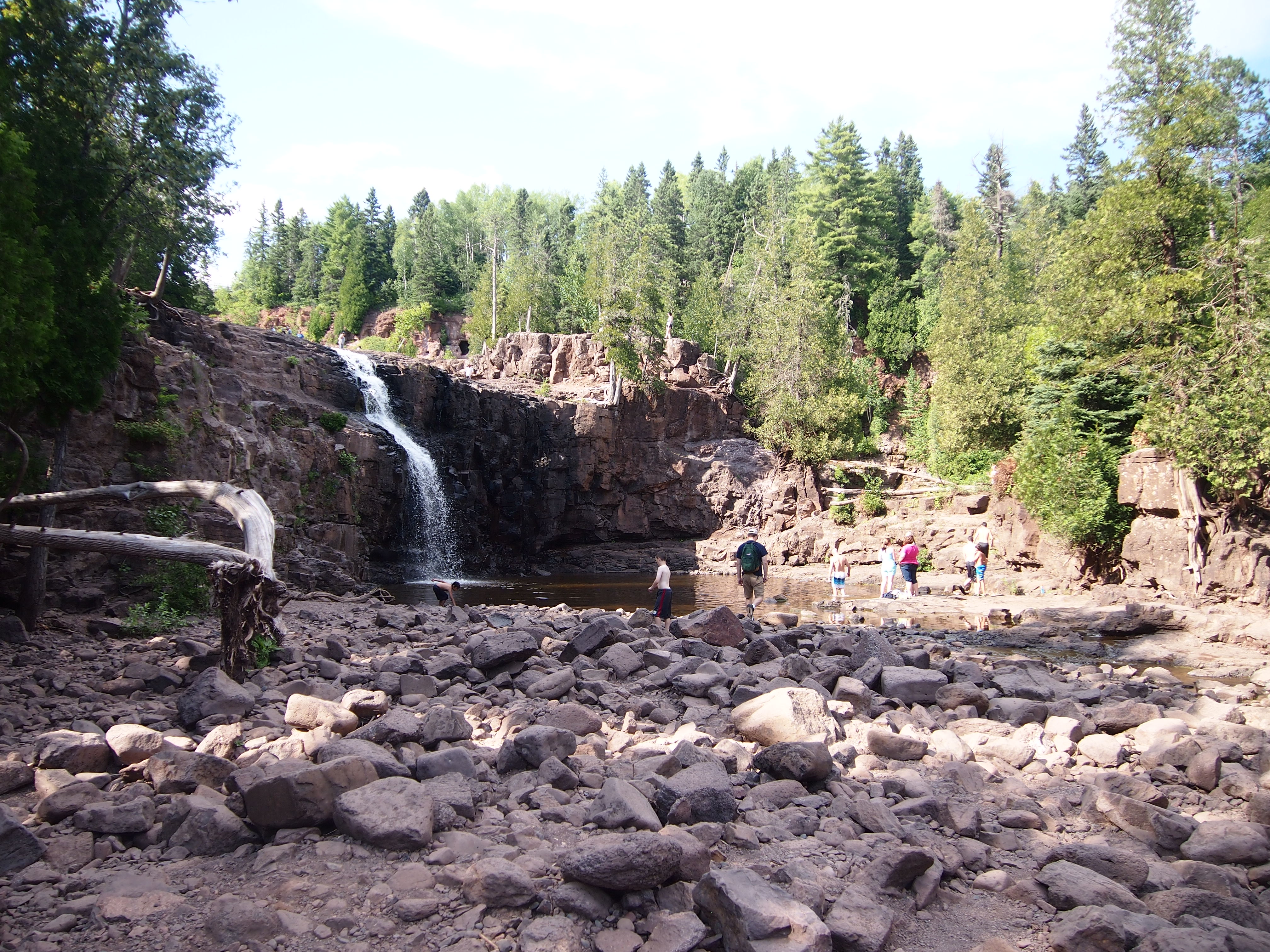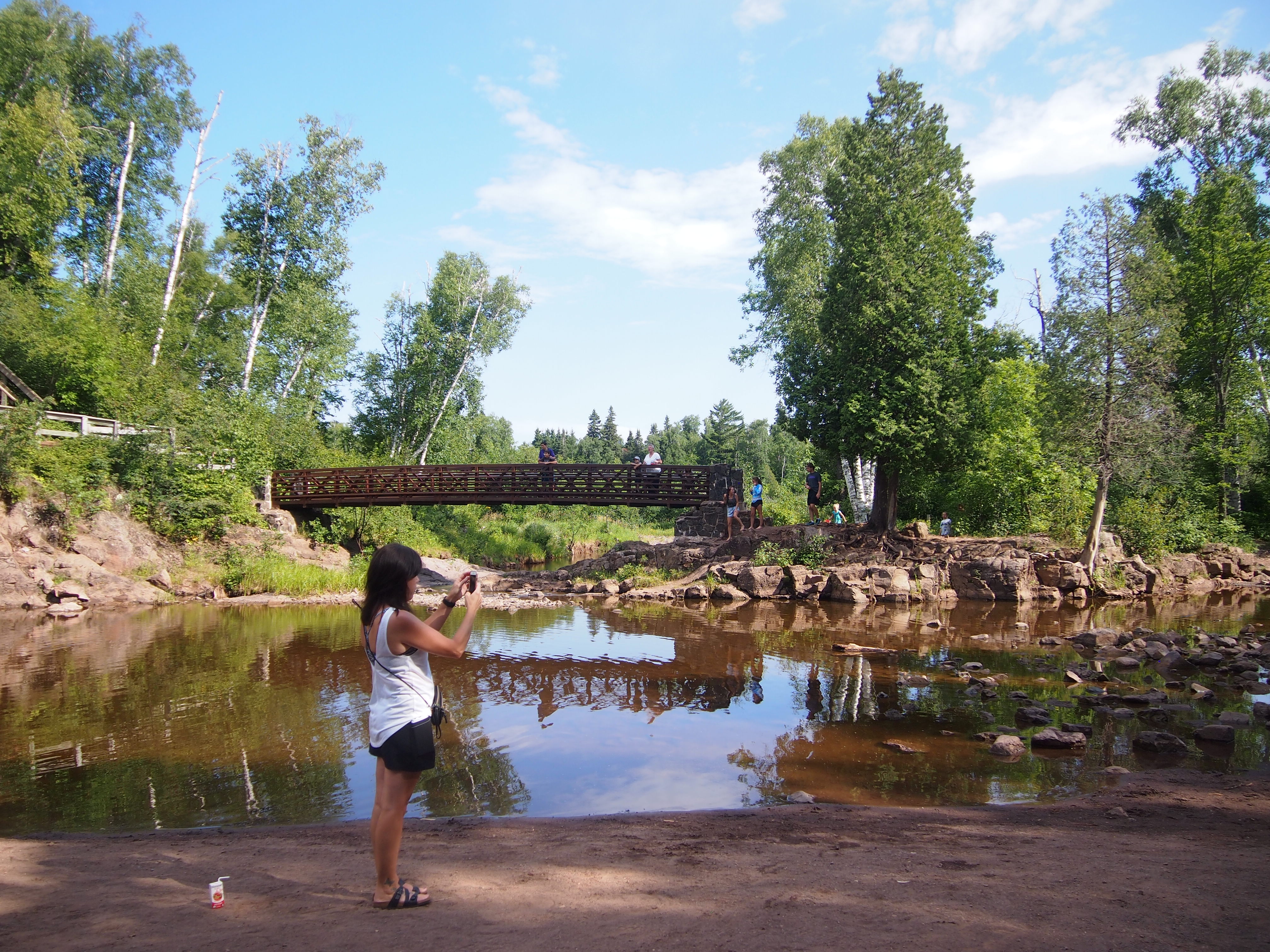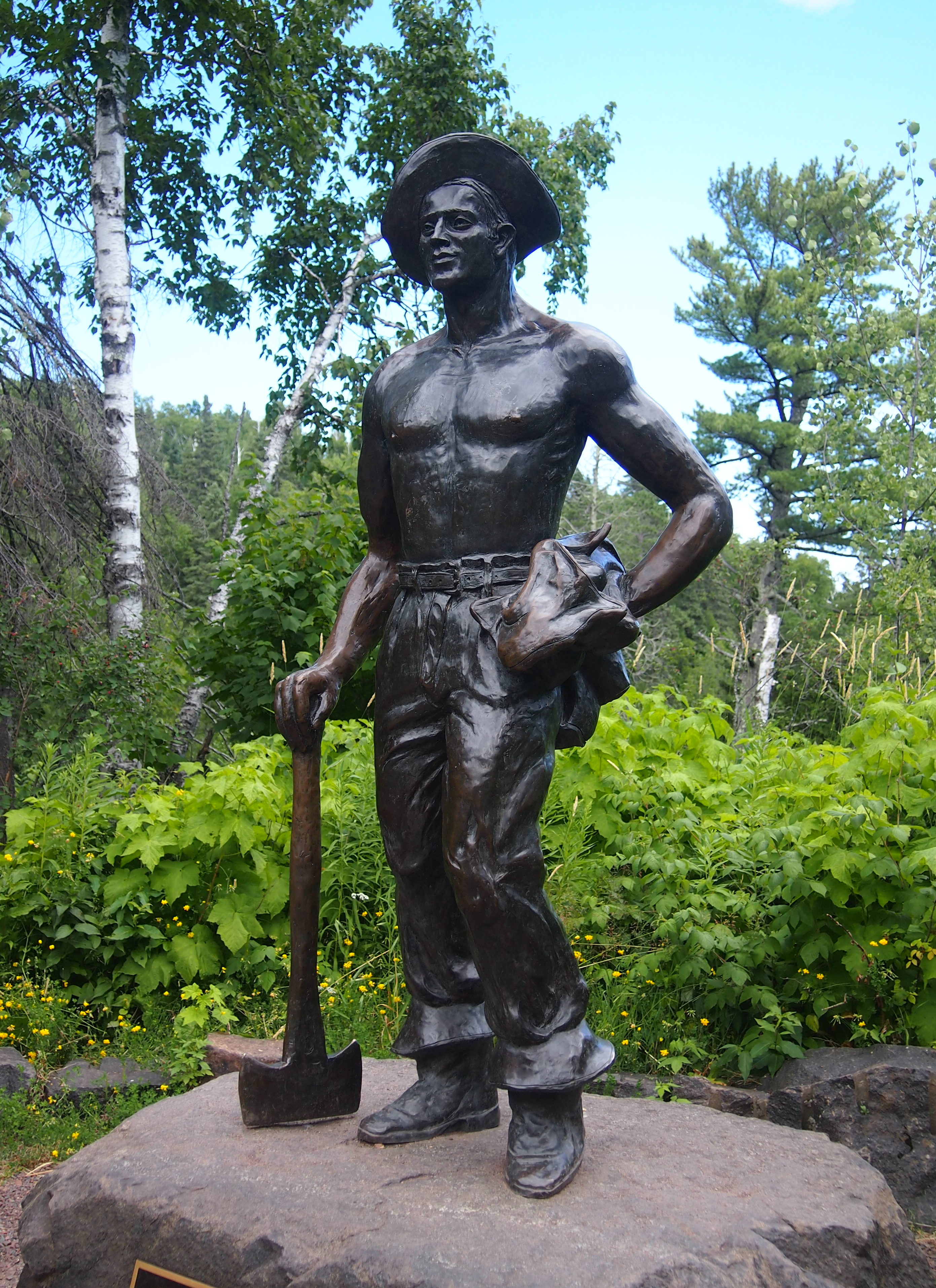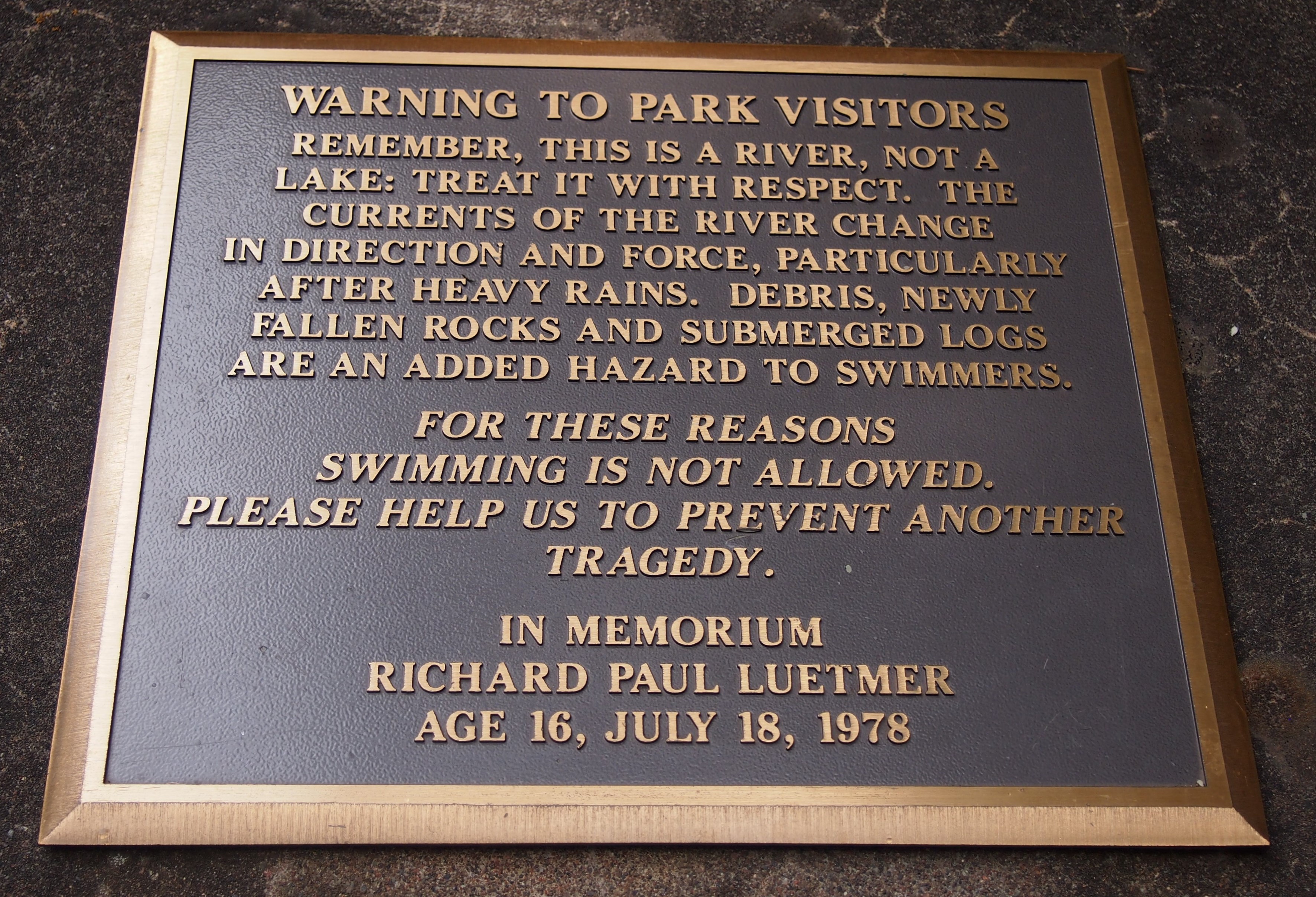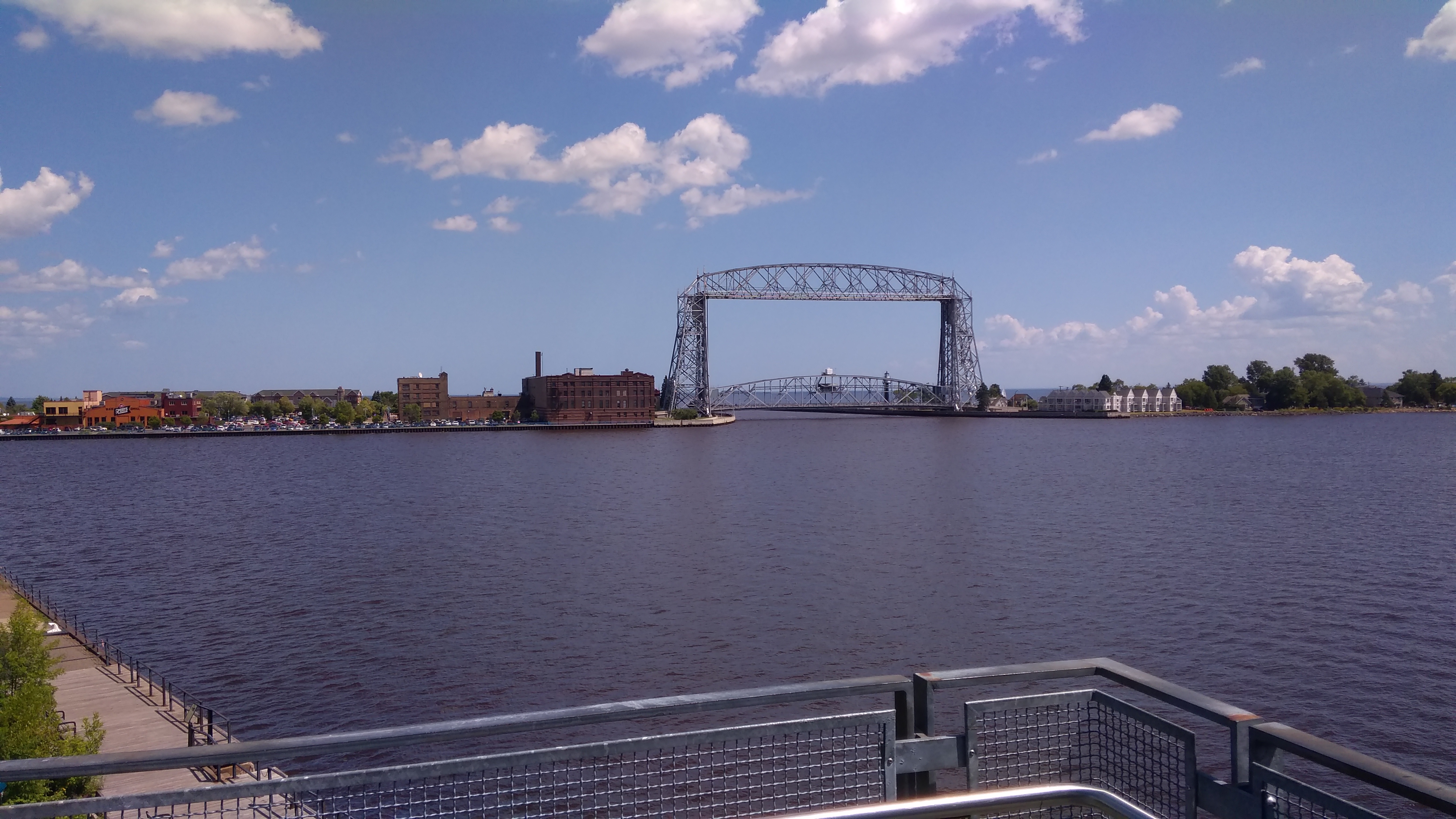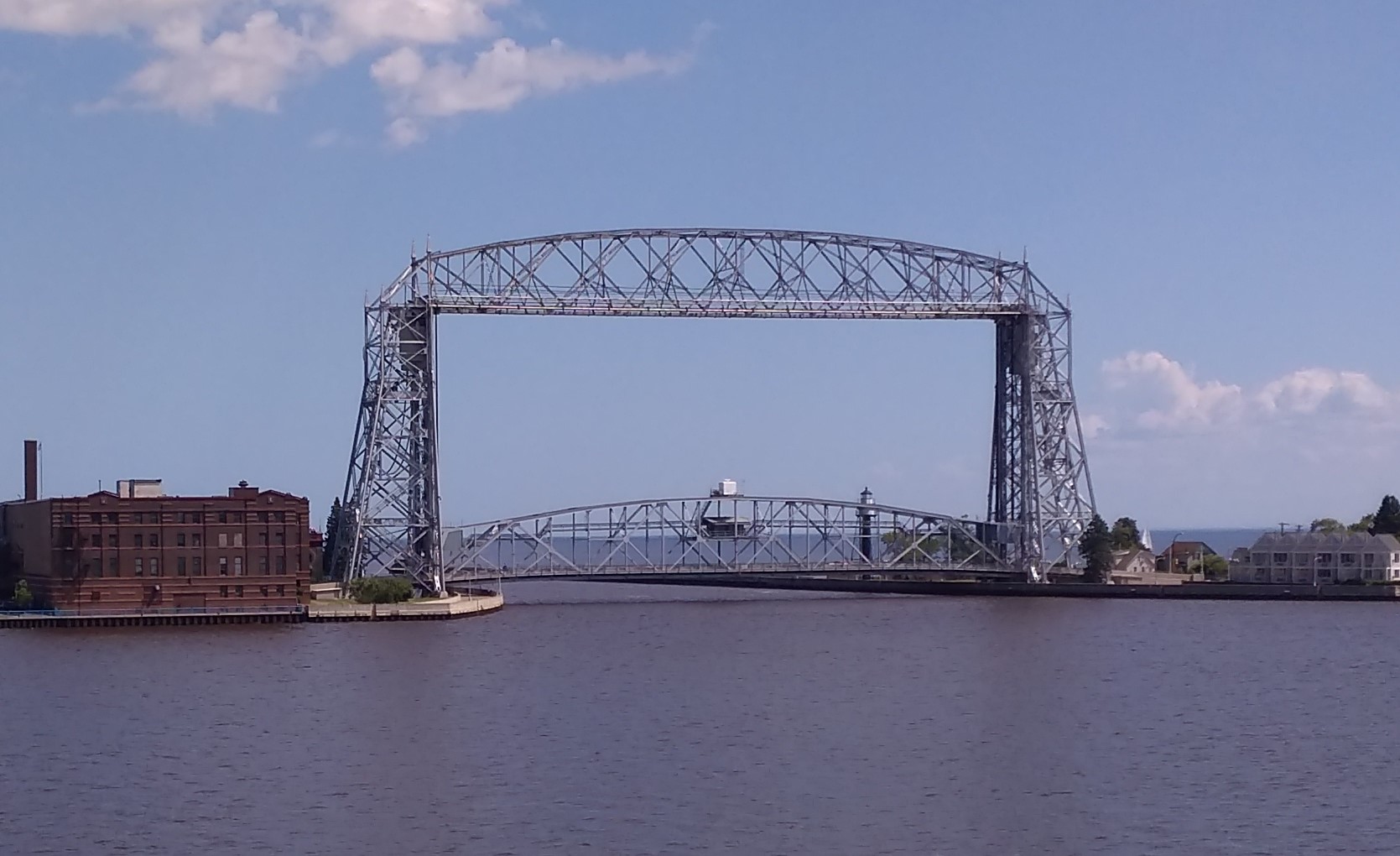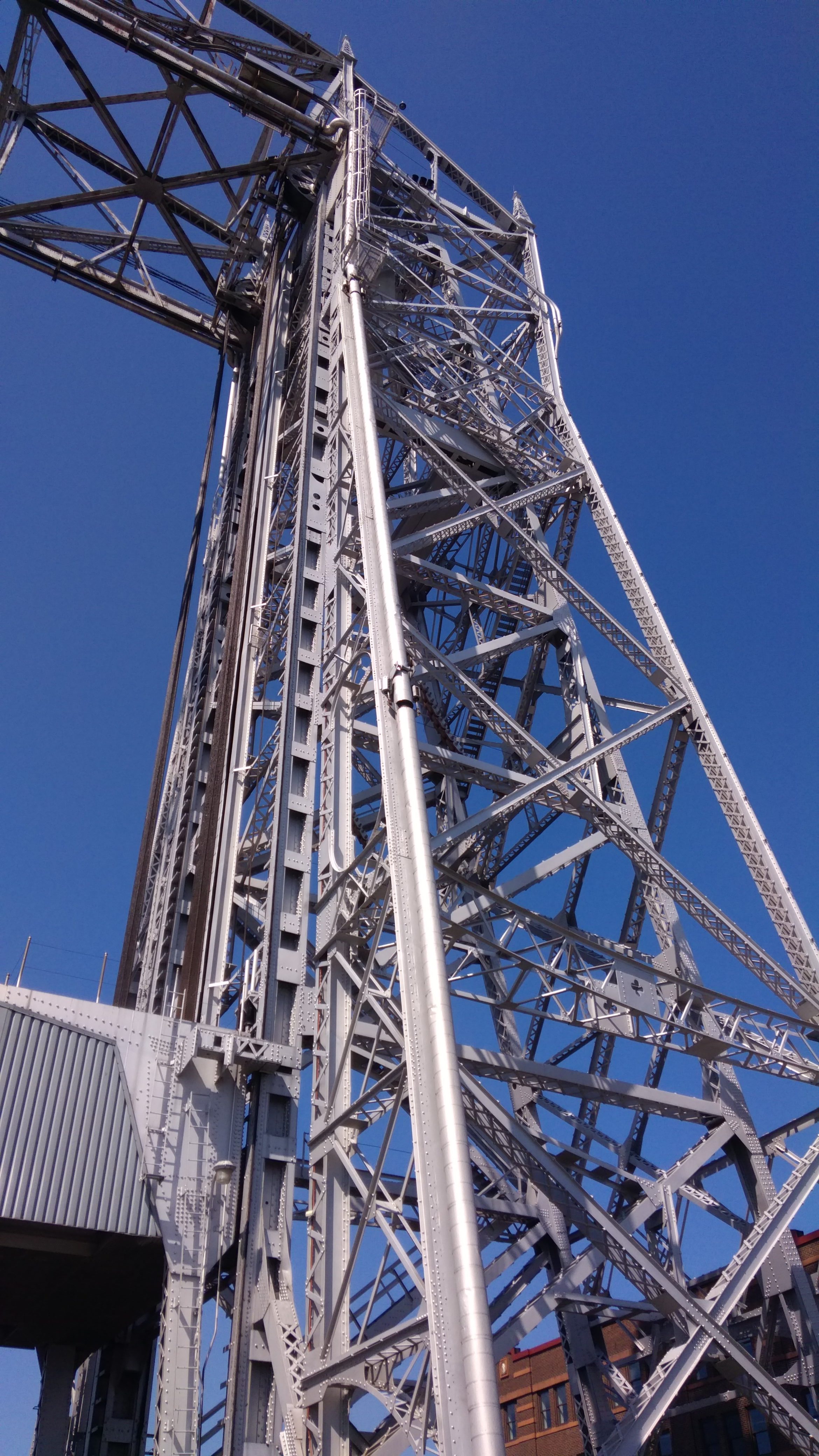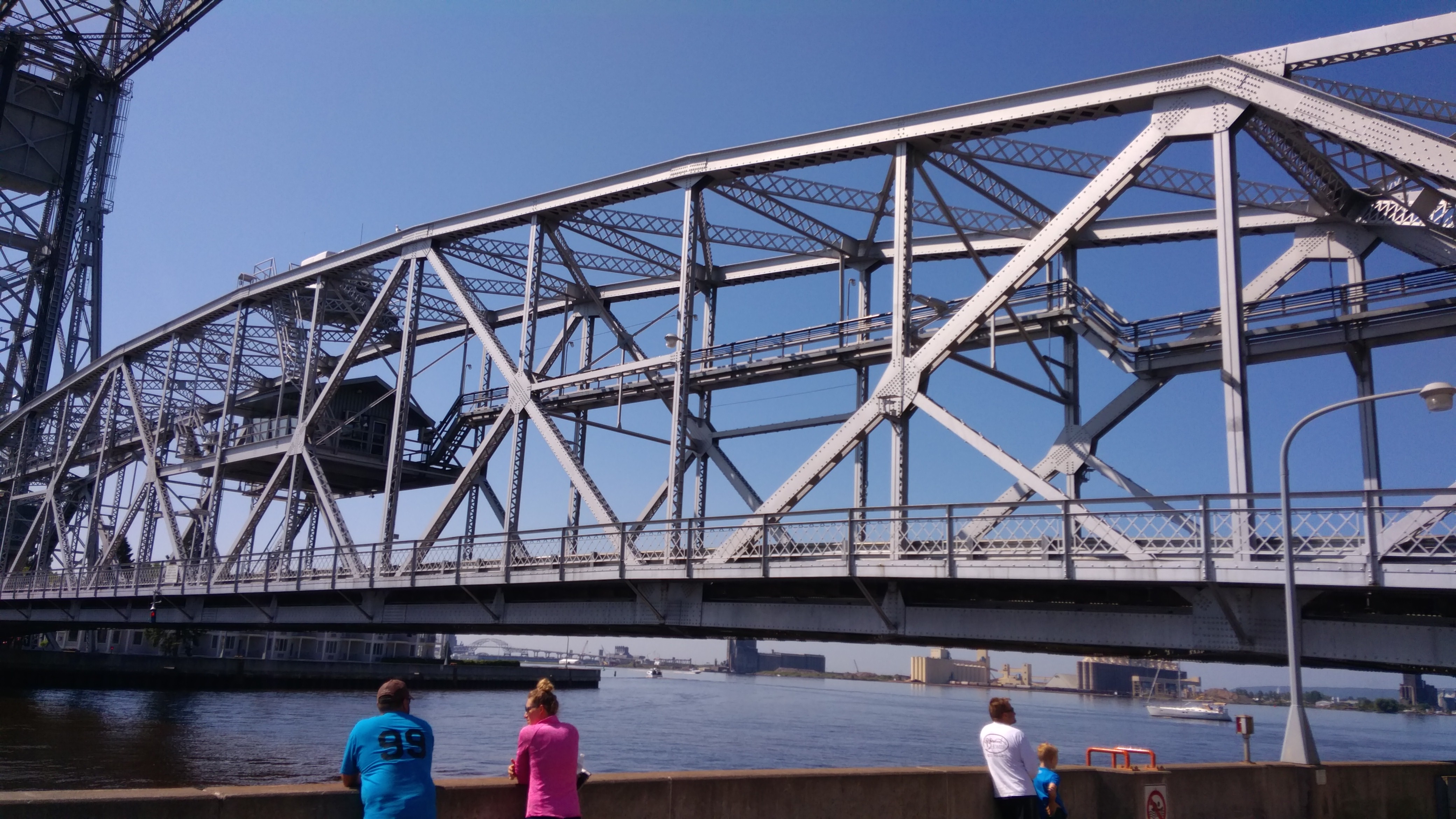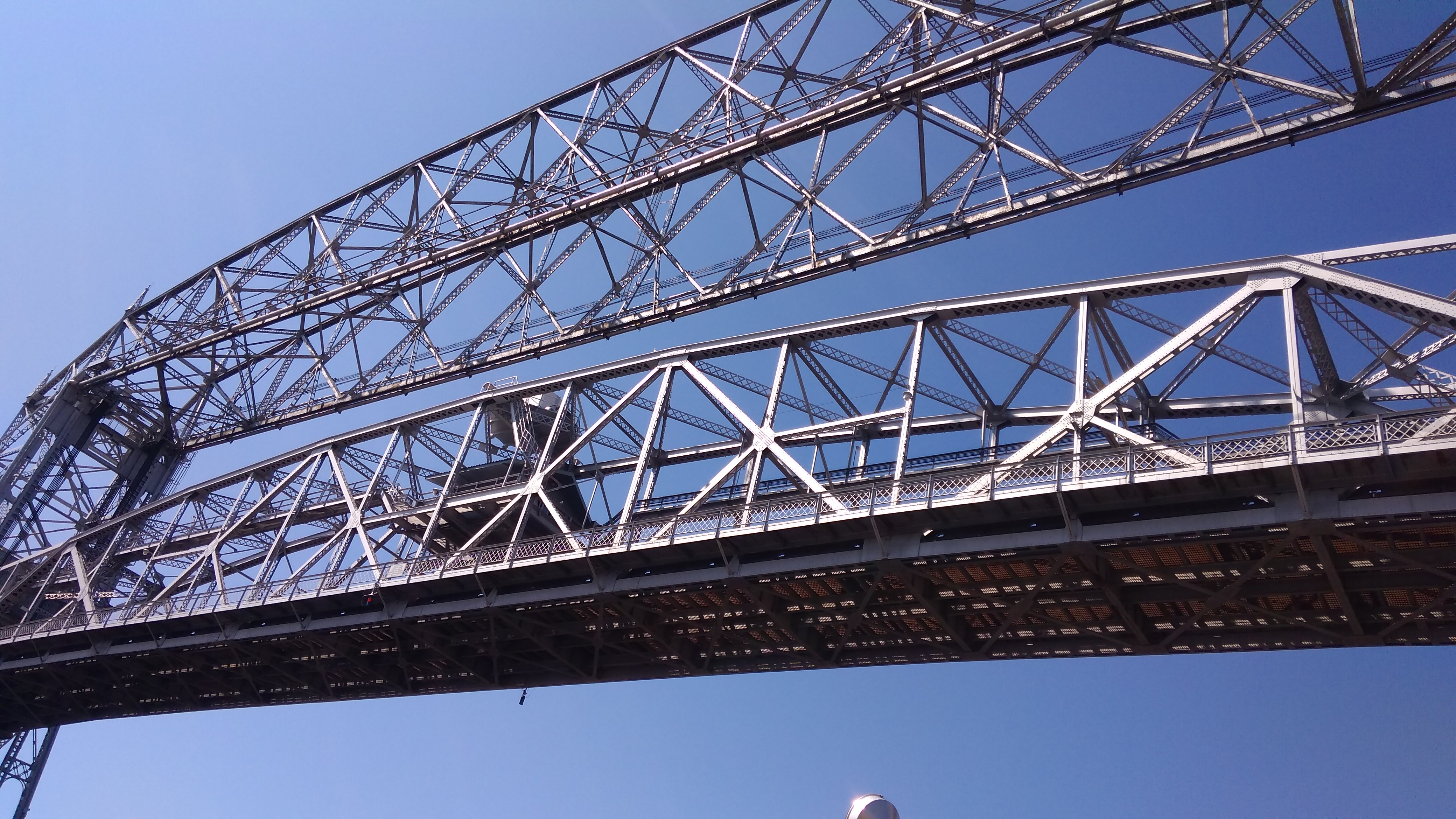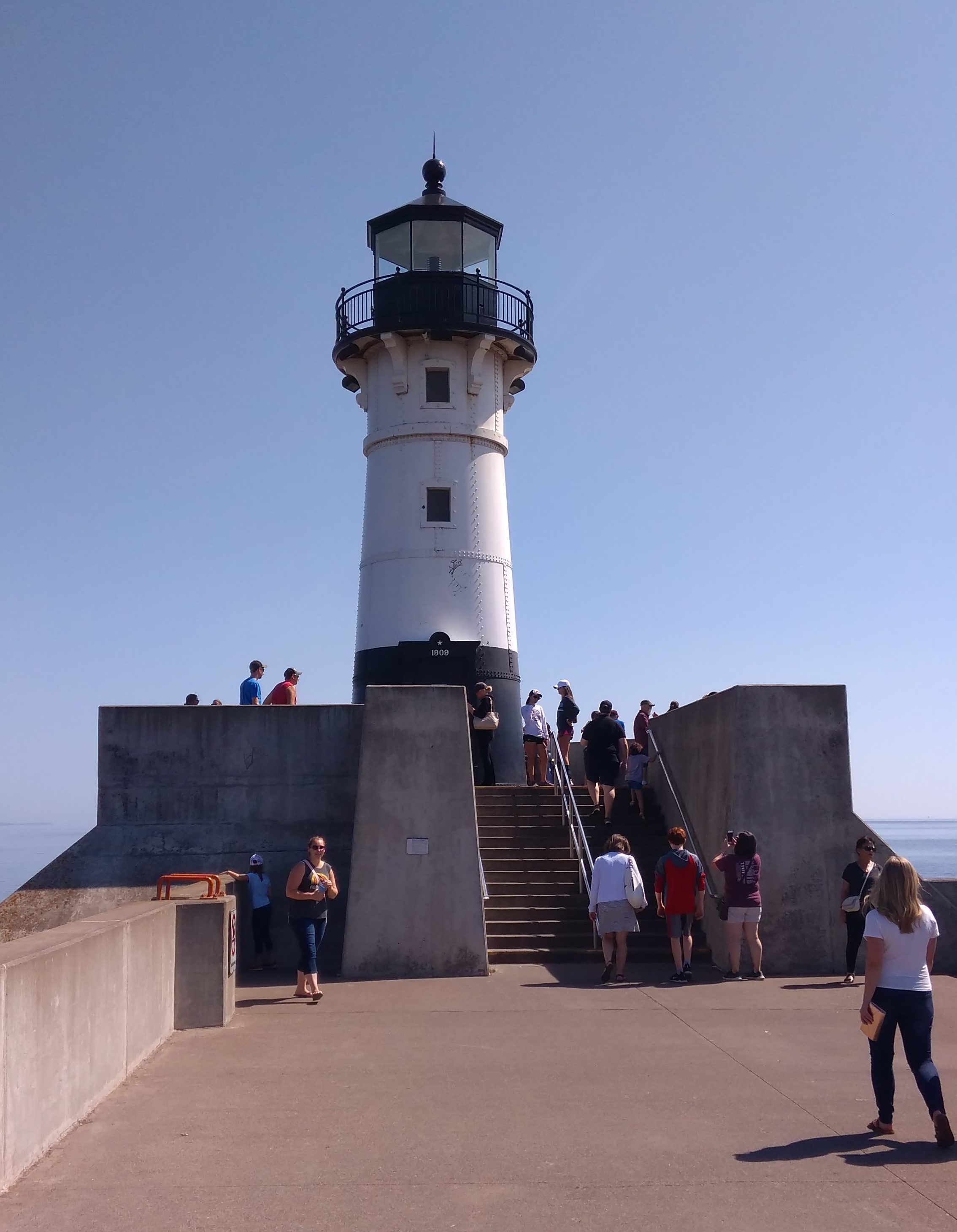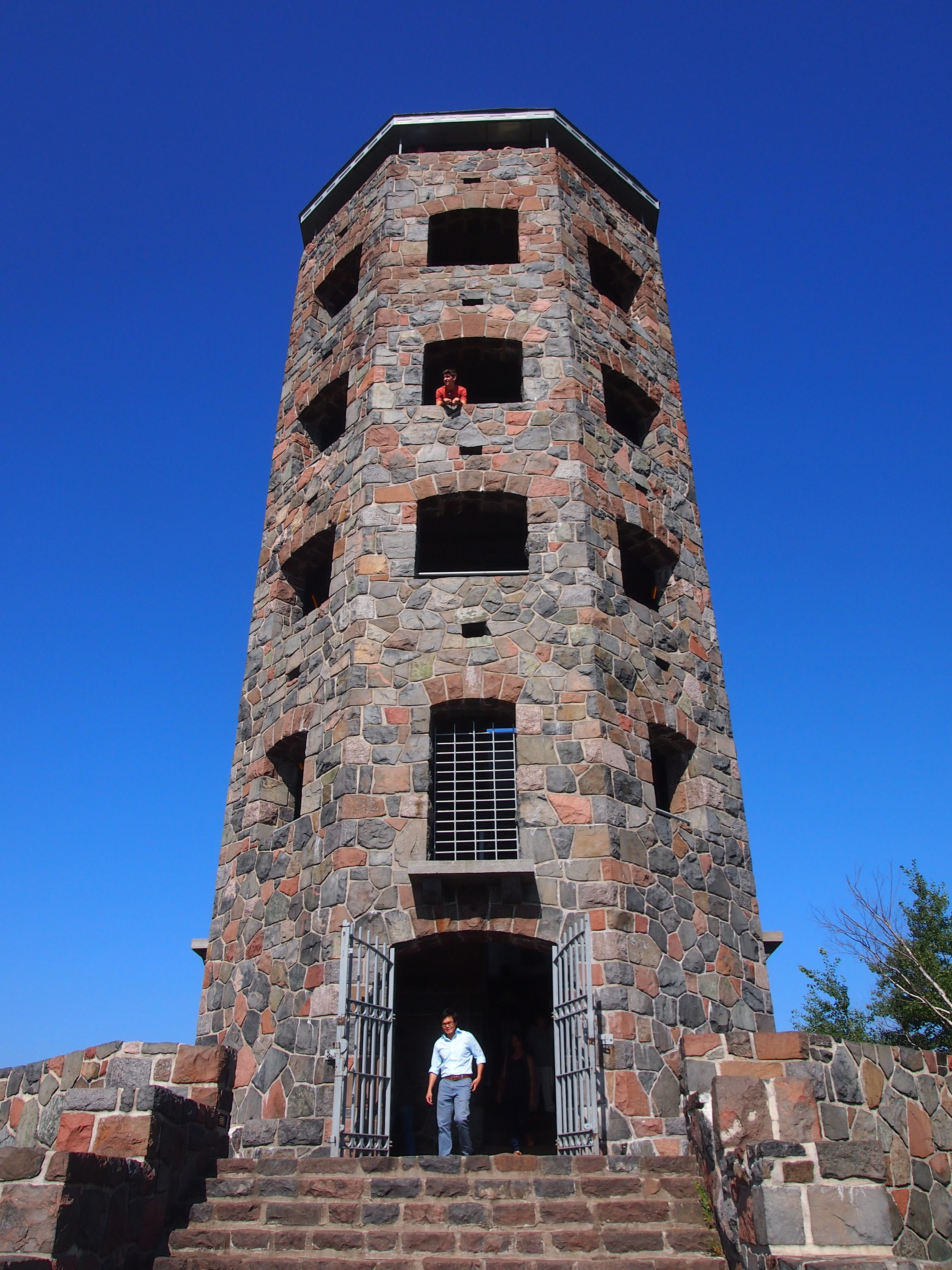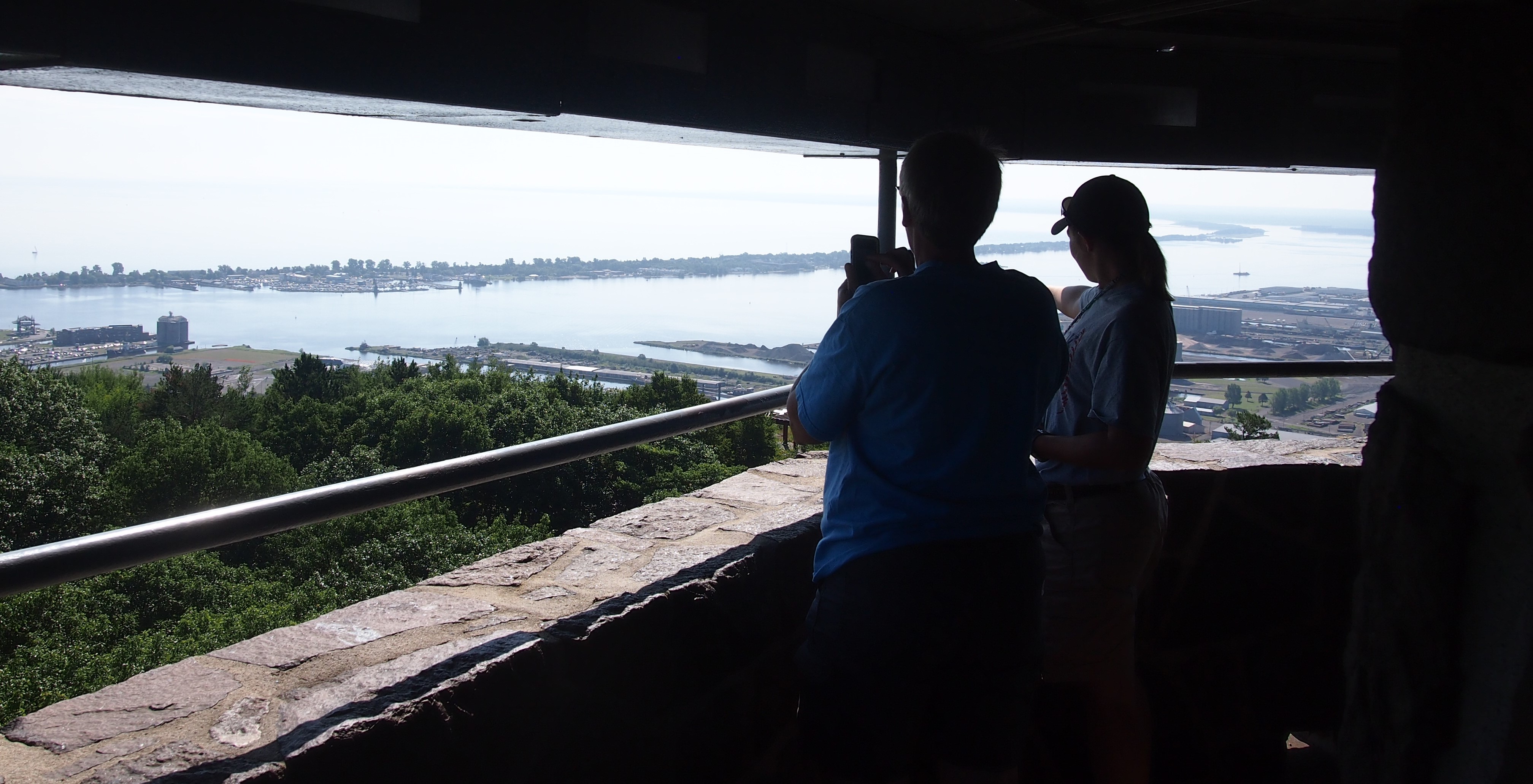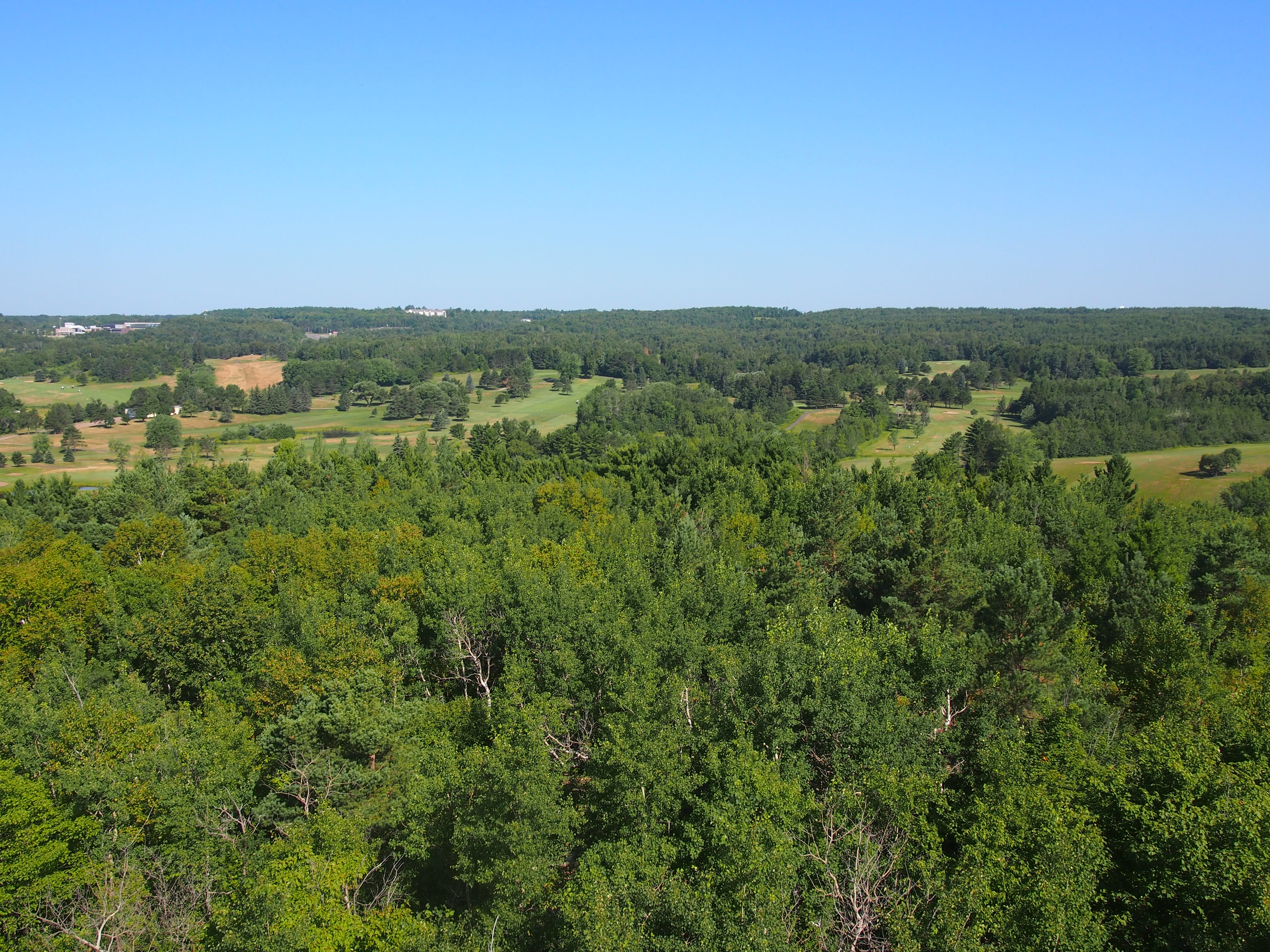According to Wiki, which cites a book called Vikings in the Attic: In Search of Nordic America by Eric Dregni (2011), there are statues of Leif Erikson in Boston, Milwaukee, Chicago, St. Paul, Duluth and Seattle.
According to Leif Erikson.org, there are also statues of him in Reykjavik, as well as Newport News, Va.; Trondheim, Norway; Minot, ND, Eiríksstaðir, Iceland; Brattahlid (Qassiarsuk), Greenland; Cleveland (a bust); and L’Anse aux Meadows, Newfoundland.
That’s not counting the more generic Viking Big Ole, who stands in Alexandria, Minn., home of the pretty-sure-it’s-a-hoax Kensington Runestone.
I’ve seen the Chicago Leif Erikson myself; it’s in Humboldt Park. Now I’ve seen the one in Duluth. Here it is.
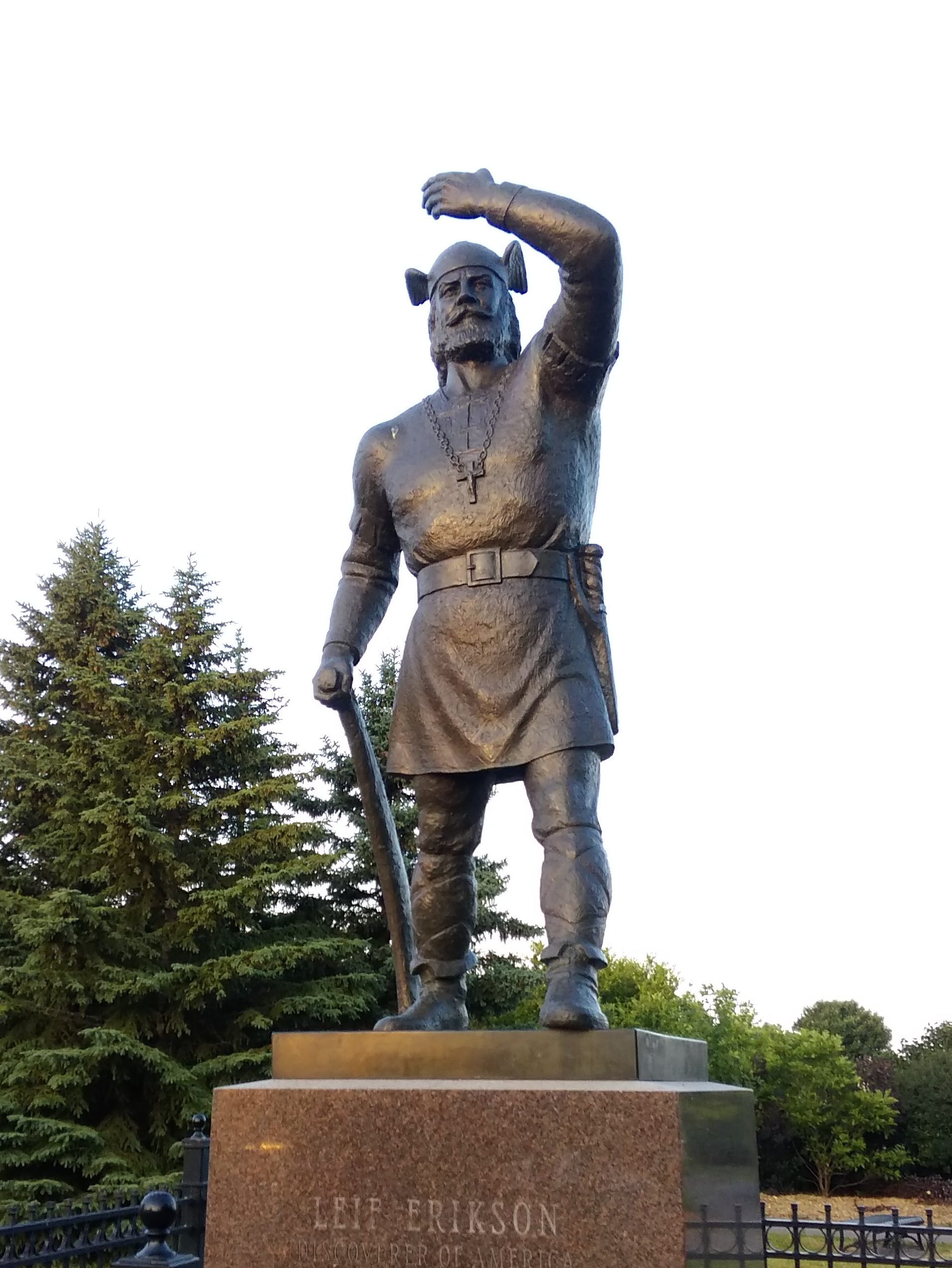 Carved on the plinth are the Viking’s name and “Discoverer of America 1000 A.D.” Also that the statue, designed and executed by John Karl Daniels, was erected by the Norwegian American League (no hyphen) of Duluth and “popular subscription.” It was “presented to the city” on August 25, 1956.
Carved on the plinth are the Viking’s name and “Discoverer of America 1000 A.D.” Also that the statue, designed and executed by John Karl Daniels, was erected by the Norwegian American League (no hyphen) of Duluth and “popular subscription.” It was “presented to the city” on August 25, 1956.
I wonder what Leif, an obscure chieftain from a remote island 1,000 years ago, would make of his current modest fame, which came to his name more than 800 years after his death. Modest fame, but then again, how many other 10th/11th-century figures are so well known in the 20th/21st century?
Who among the teeming billions on the Earth now, through some completely convoluted and unpredictable set of circumstances across the centuries to come, will be remembered at the beginning of the fourth millennium, for reasons impossible to imagine?
A stout iron fence surrounds the statue, I guess to discourage casual vandalism, but ardent vandals, statue revisionists, or garden-variety wankers could climb the fence without too much trouble. As far as I know, there hasn’t been much grumbling about old Leif, though skinhead lowlifes apparently try to co-opt a statue of the lesser-known Icelandic explorer Thorfinn Karlsefni in Pennsylvania each October 9.
That being Leif Erikson Day. Time And Date.com says: “October 9 was chosen because it is the anniversary of the day that the ship Restauration arrived in New York from Stavanger, Norway, on October 9, 1825. This was the start of organized immigration from Scandinavia to the USA. The date is not associated with an event in Leif Erikson’s life.”
Some context for the Leif Erikson statue in Duluth: it’s in Leif Erickson Park (sometimes styled Erikson) and next to the Leif Erikson Rose Garden, also known as the Duluth Rose Garden. It has some fine plantings.
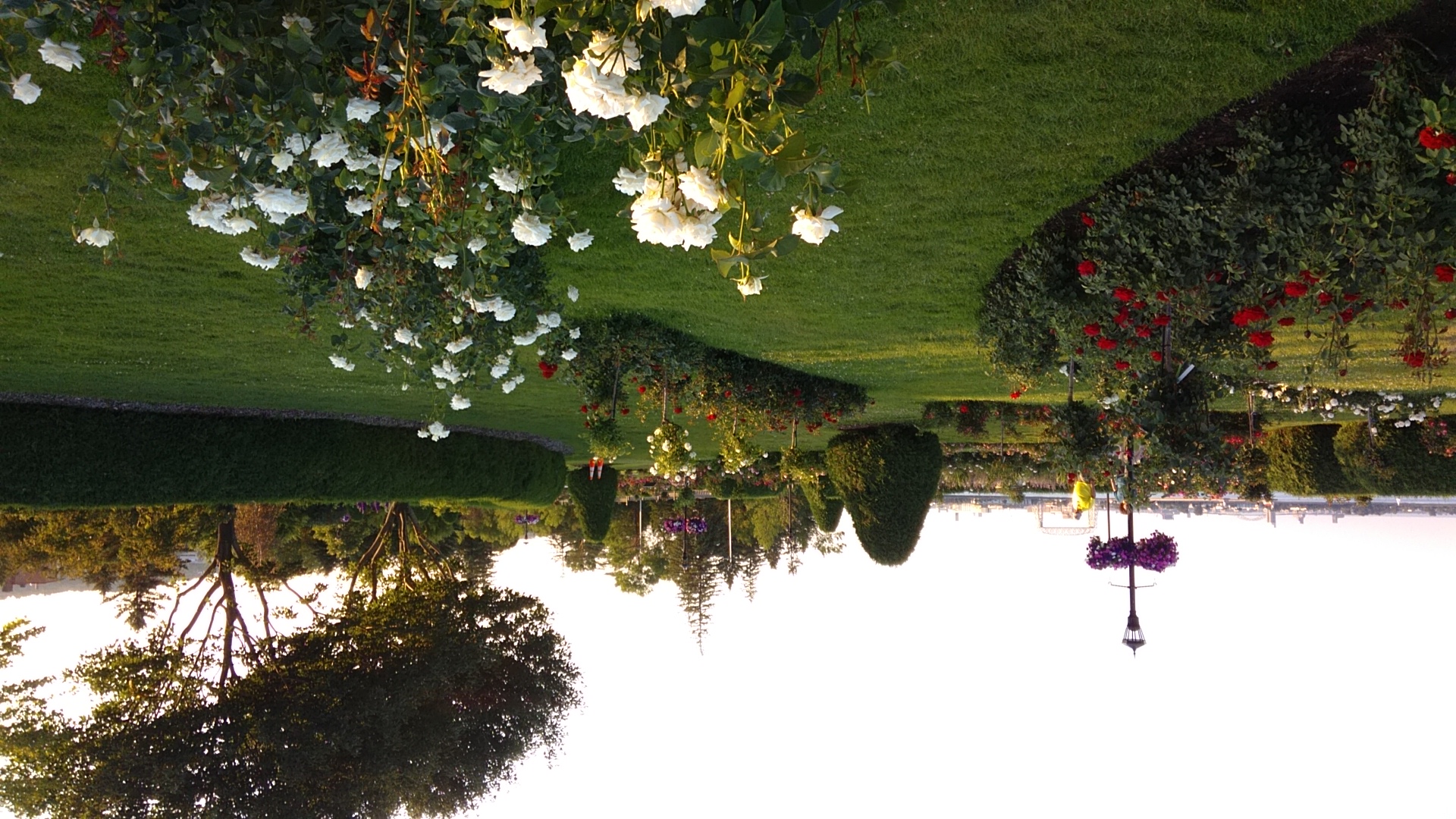
 The garden “was begun by Mrs. John Klints, a native of Latvia, who wanted to give her adopted home of Duluth a beautiful formal rose garden similar to those she’d known in Europe,” says Public Gardens of Minnesota. “It opened in 1965 within Leif Erickson Park, with 2,000 roses, all arranged in gently curving beds surrounding an antique horse fountain. Here it remained for 25 years….
The garden “was begun by Mrs. John Klints, a native of Latvia, who wanted to give her adopted home of Duluth a beautiful formal rose garden similar to those she’d known in Europe,” says Public Gardens of Minnesota. “It opened in 1965 within Leif Erickson Park, with 2,000 roses, all arranged in gently curving beds surrounding an antique horse fountain. Here it remained for 25 years….
“A vast and ambitious city redevelopment project, and a clever Department of Transportation solution to the termination point of the freeway entering Duluth, resulted in the new location of the rose garden. The garden reopened in 1994 after four years of construction… again as part of the new Leif Erickson Park.
“The six acres are still formal in nature and still have the fountain and gazebo from the original garden, but the beds are now two long beds and four circular beds. There are now in excess of 3,000 roses and 12,000 non-rose plantings, including day lilies, evergreen shrubs, mixed perennials and an herb garden.”
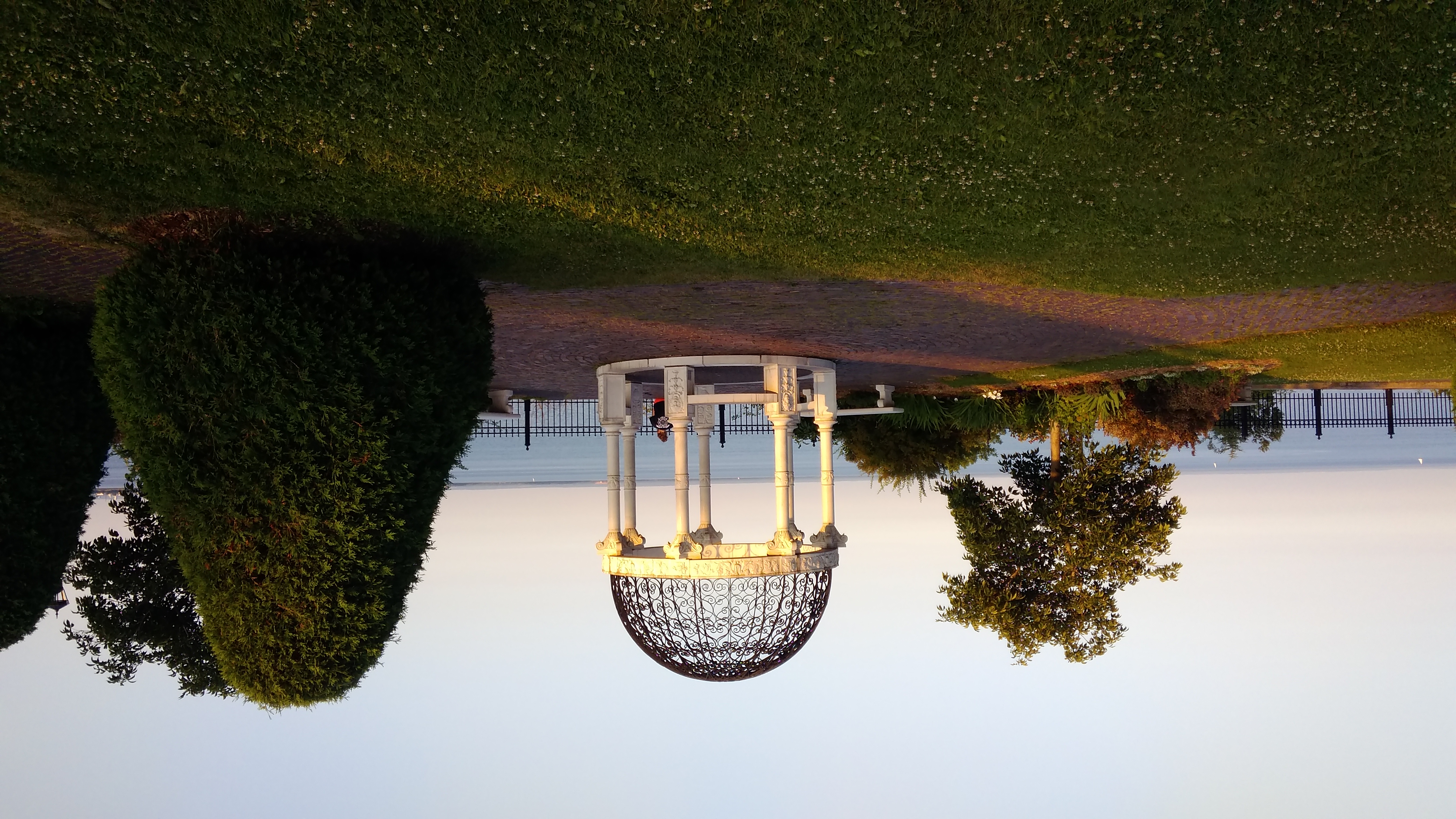 Good to see the garden’s gazebo. It has a nice view of Lake Superior. That’s what this country needs, more public gazebos.
Good to see the garden’s gazebo. It has a nice view of Lake Superior. That’s what this country needs, more public gazebos.



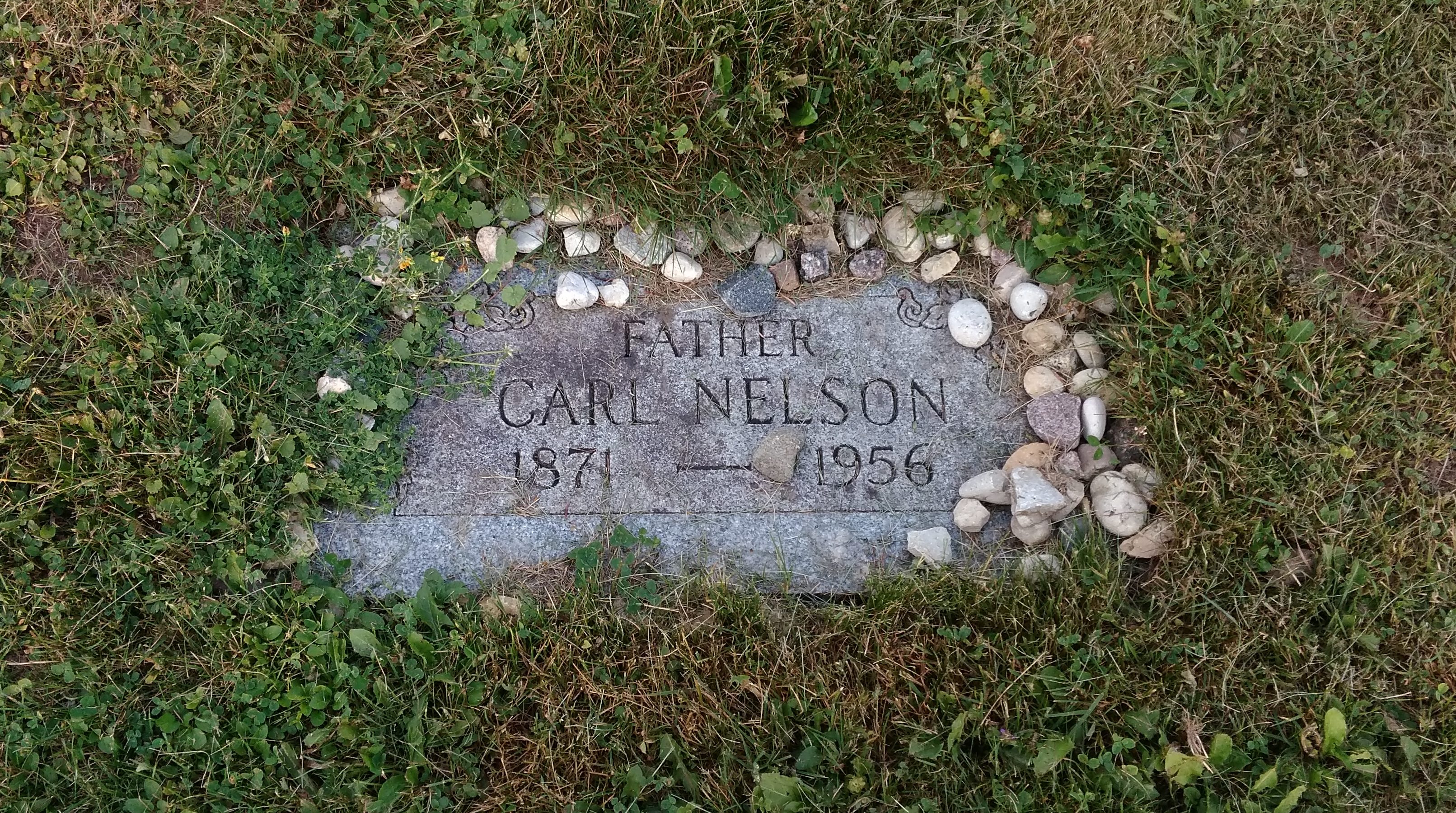 Nearby, Clarence R. Nelson has a fair number of stones as well. His headstone says he was a sergeant in WWII, with the only date given being Oct. 20, 1942, presumably his death.
Nearby, Clarence R. Nelson has a fair number of stones as well. His headstone says he was a sergeant in WWII, with the only date given being Oct. 20, 1942, presumably his death.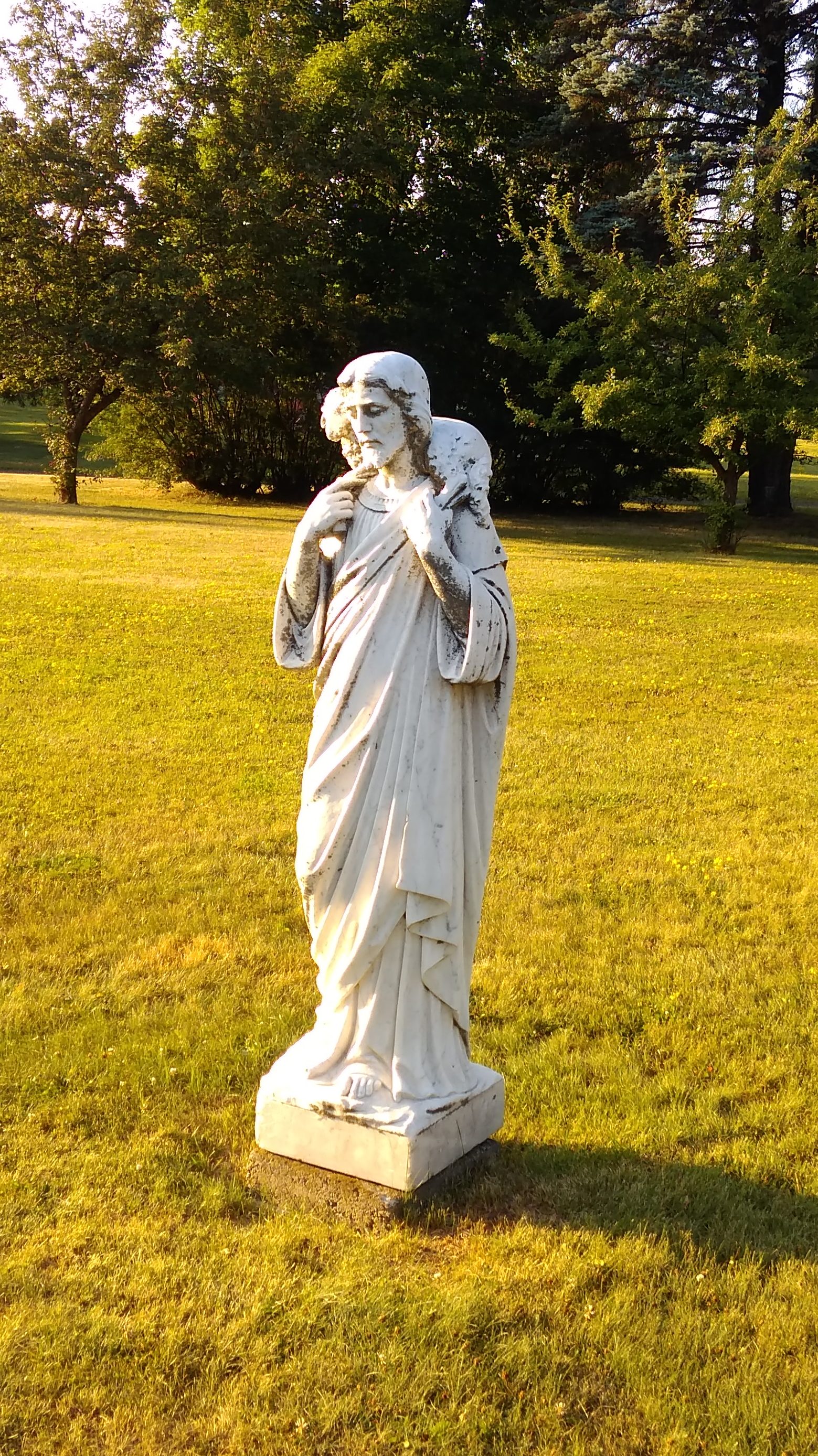

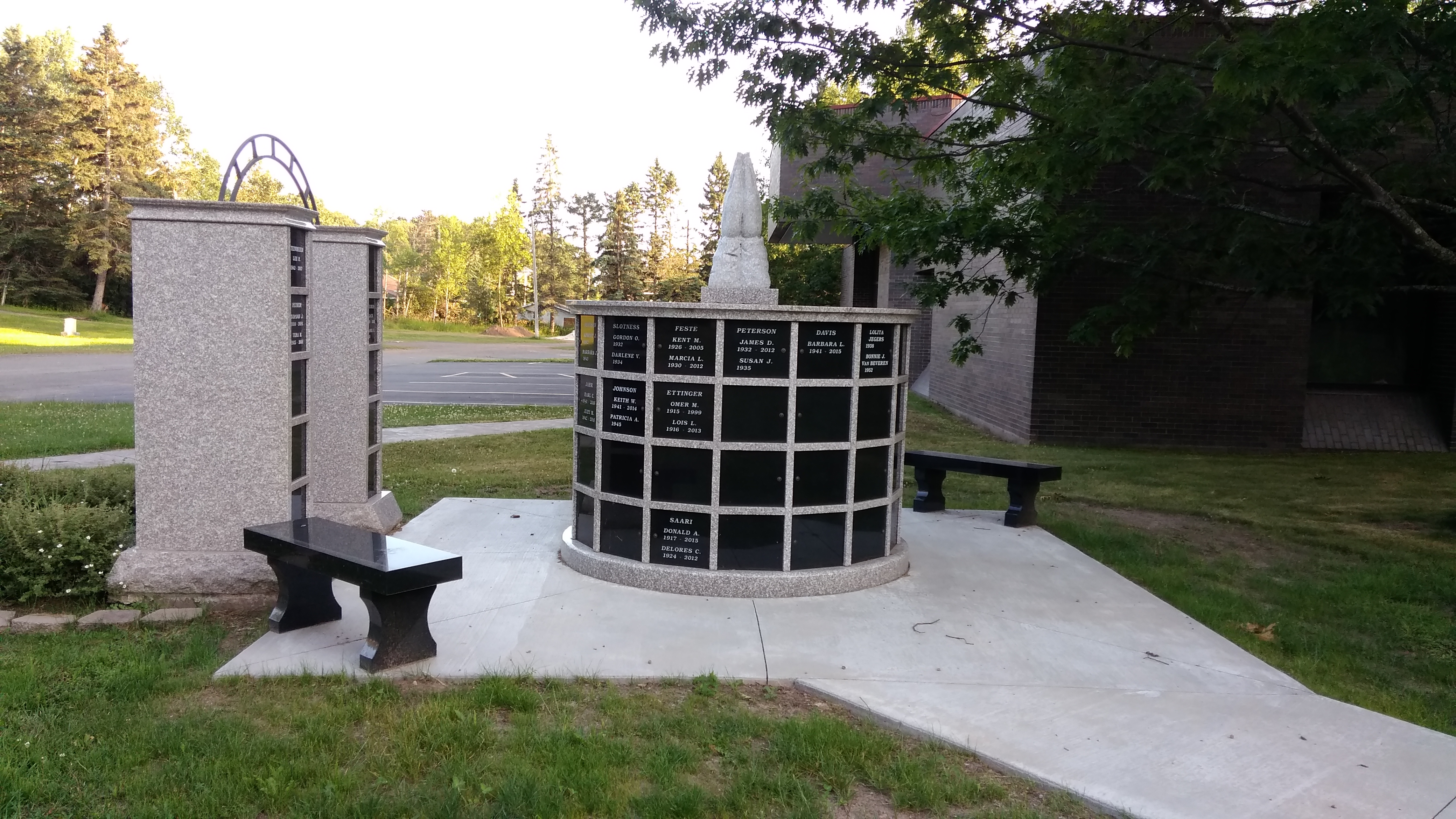

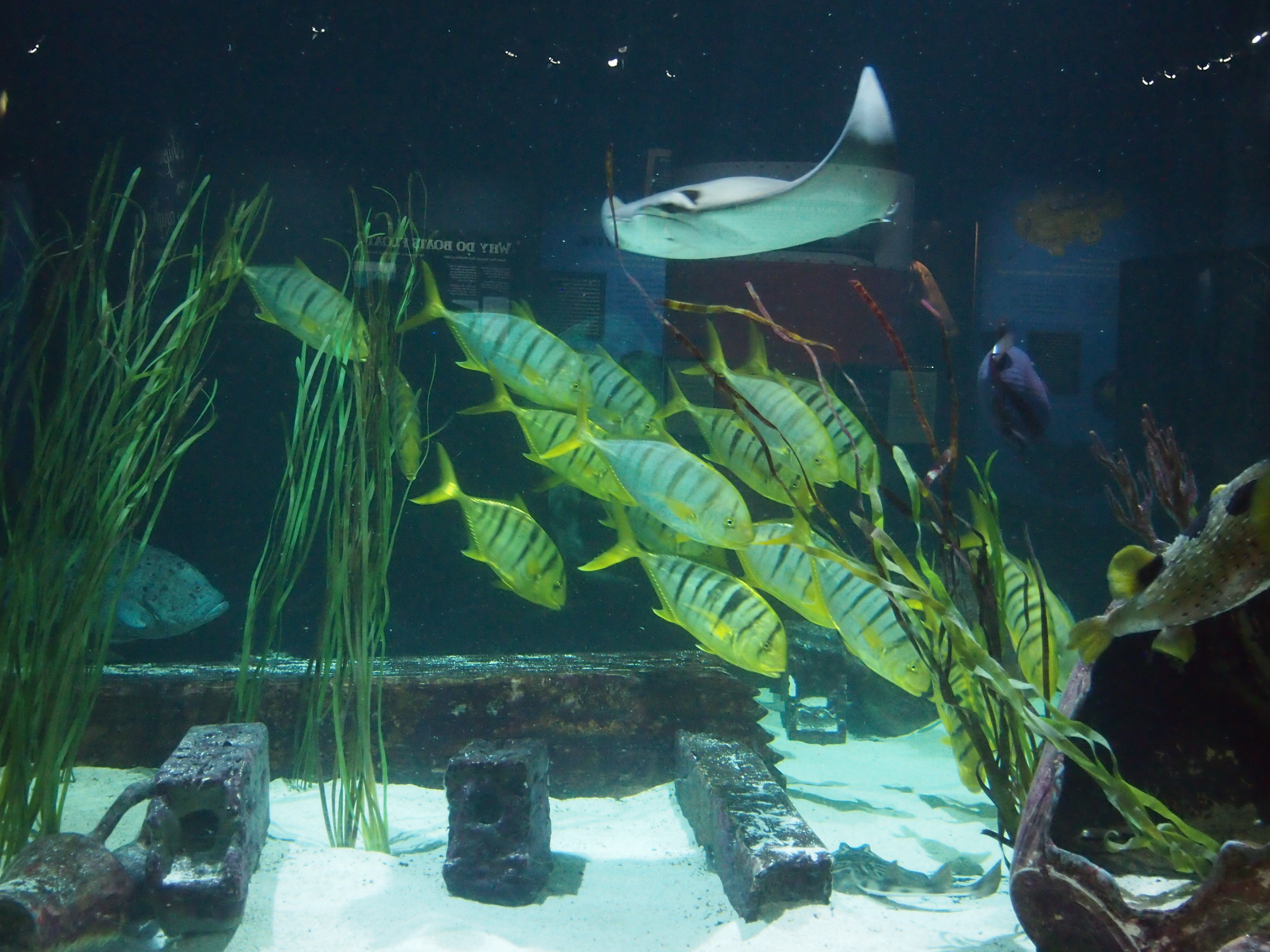
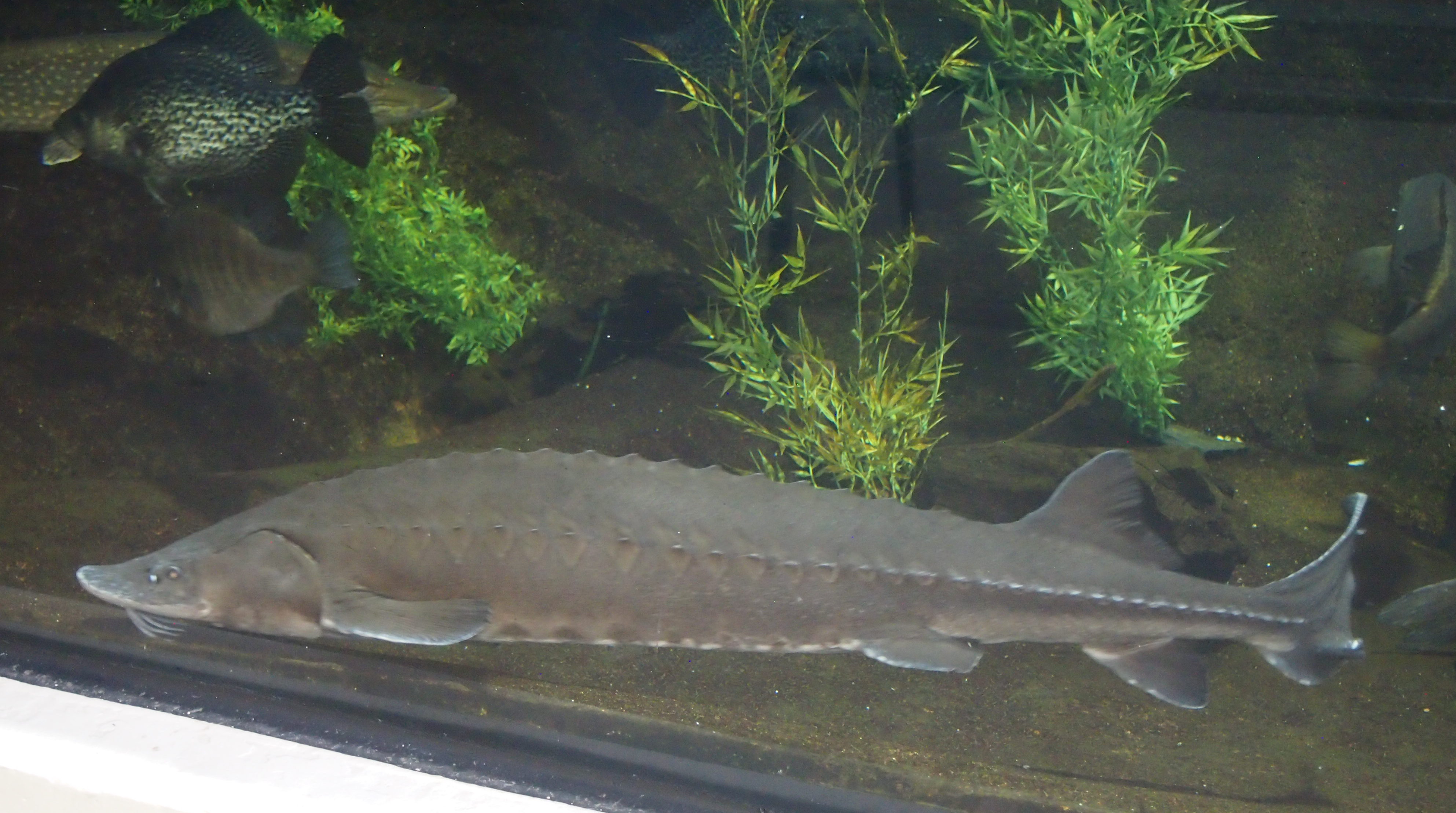
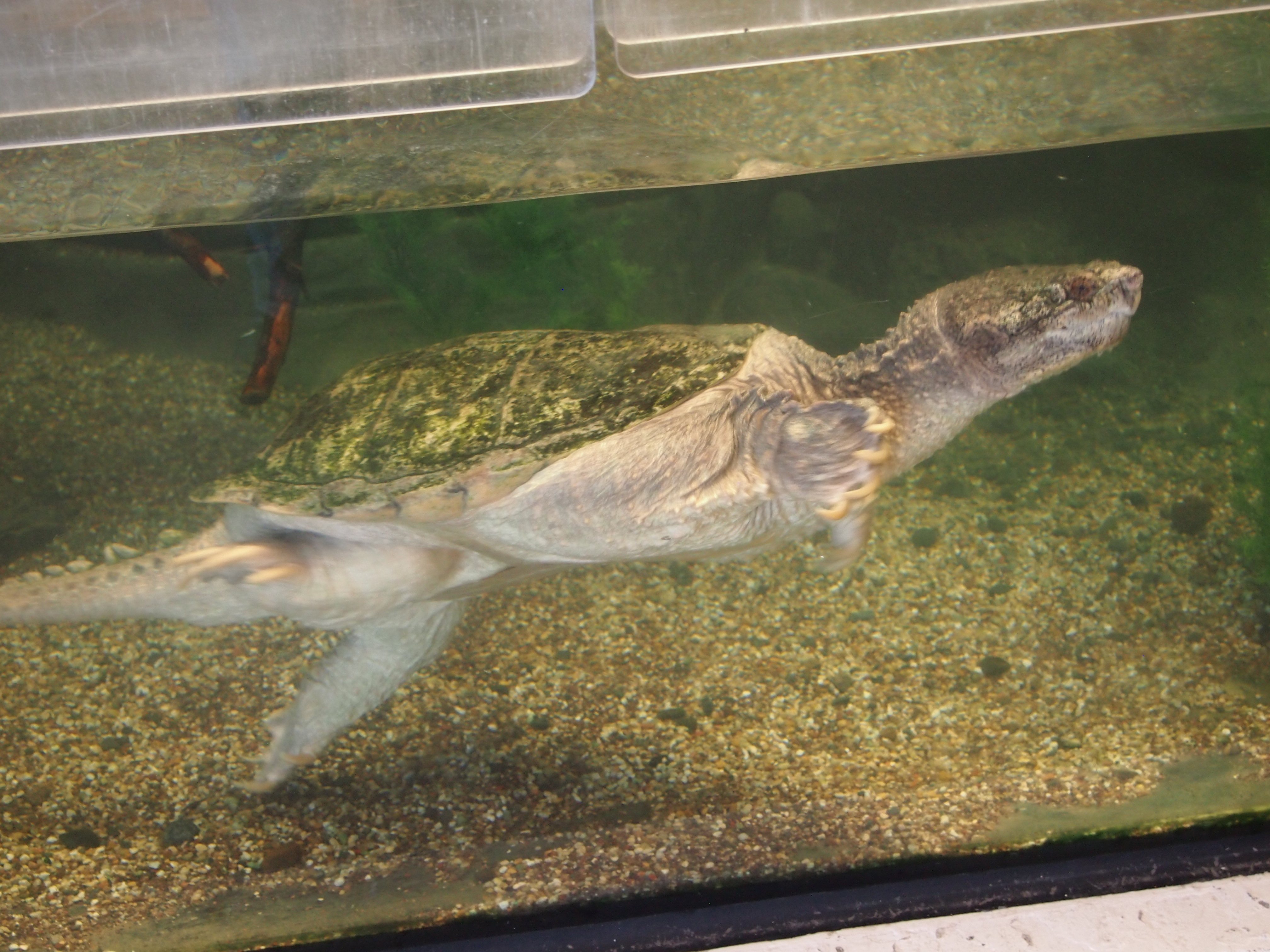
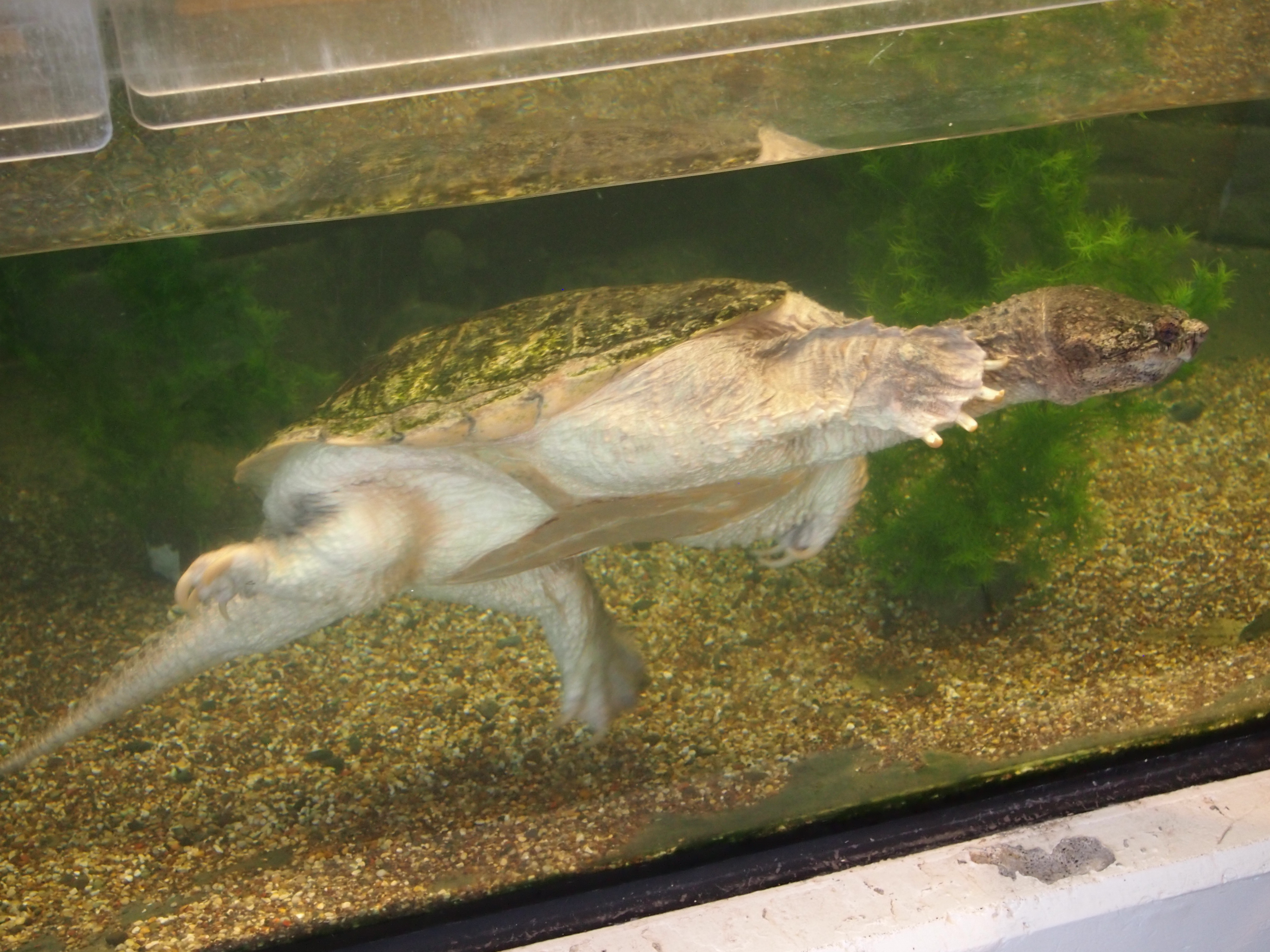
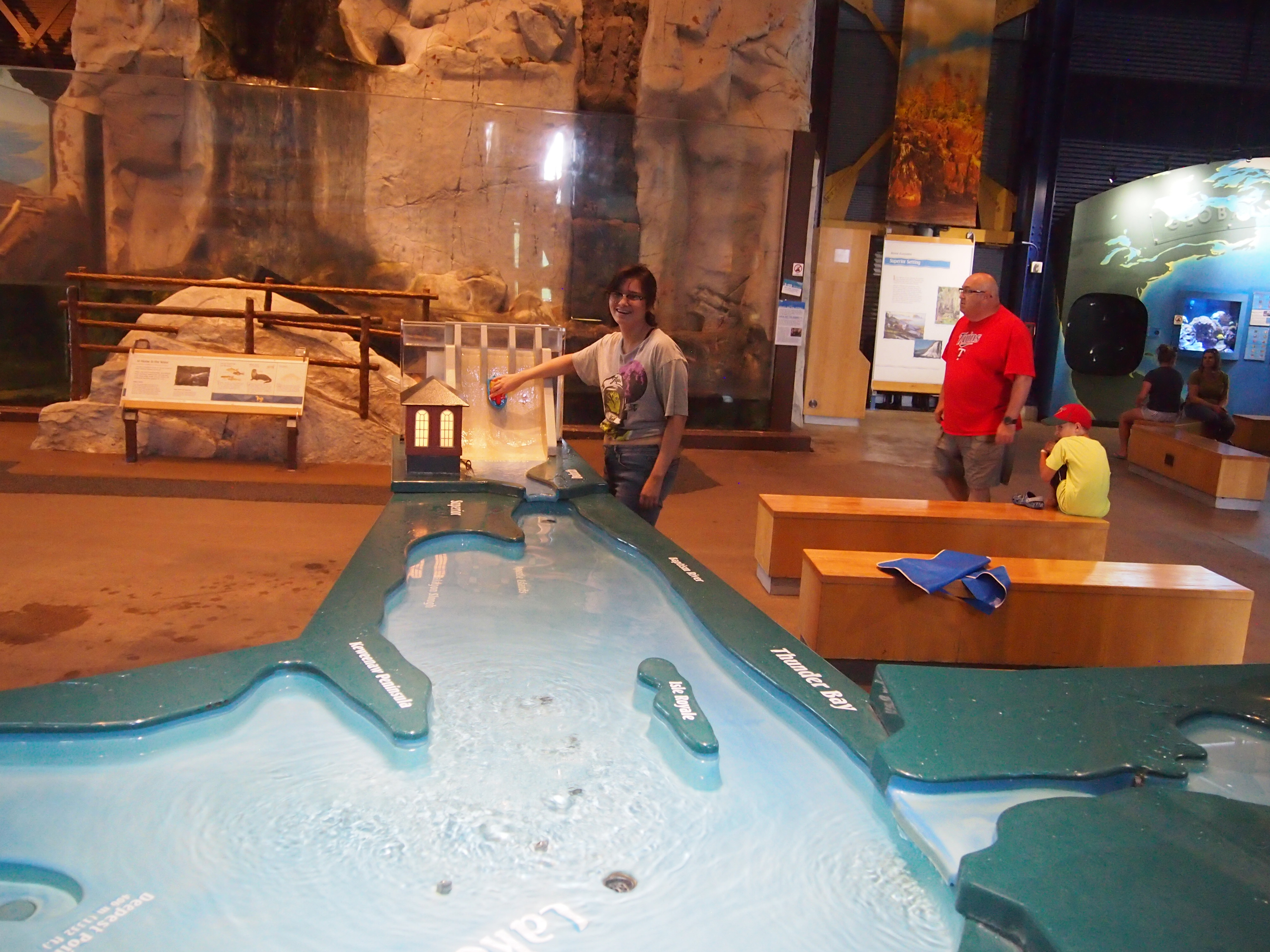
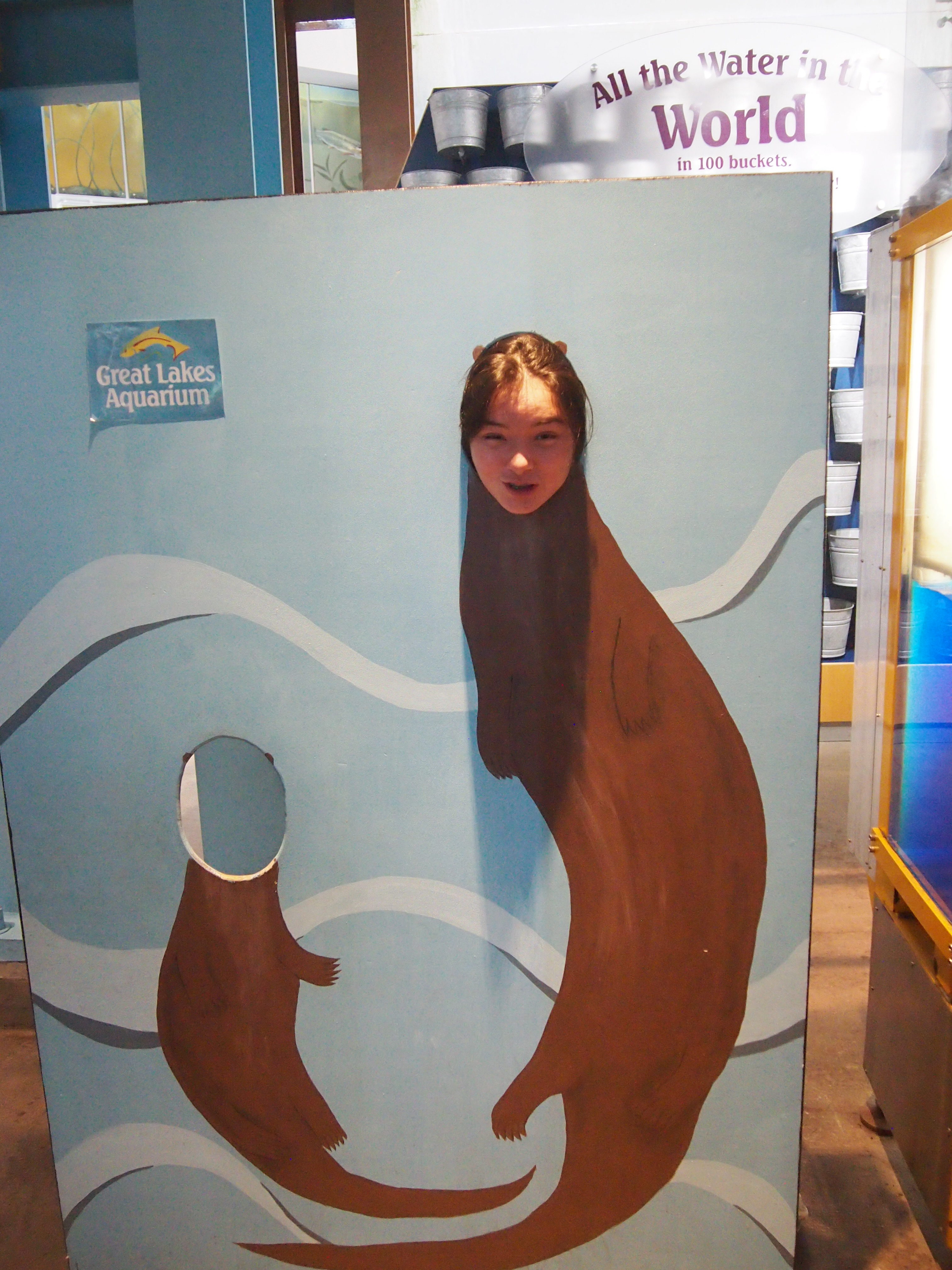
 This aircraft isn’t the one Bong flew. While he was stateside, it crashed while another pilot was flying it. The Army took delivery of the one on display in July 1945, after Bong had been ordered to quit flying combat missions. The Richard I. Bong American Legion Post of Poplar, Wis., acquired the plane from the Air Force in 1949, and it was on display in that town for some decades.
This aircraft isn’t the one Bong flew. While he was stateside, it crashed while another pilot was flying it. The Army took delivery of the one on display in July 1945, after Bong had been ordered to quit flying combat missions. The Richard I. Bong American Legion Post of Poplar, Wis., acquired the plane from the Air Force in 1949, and it was on display in that town for some decades.